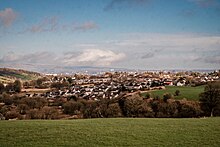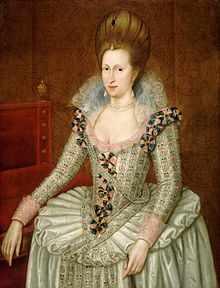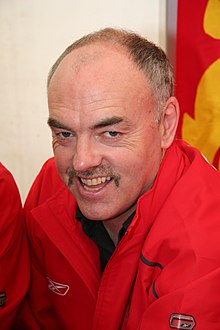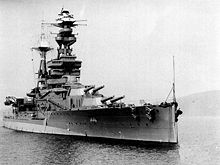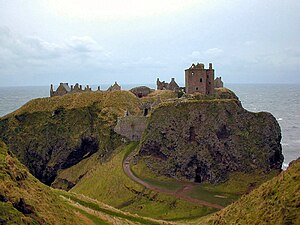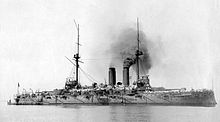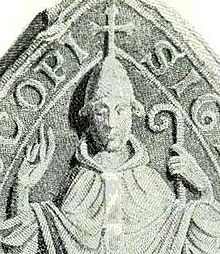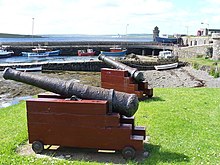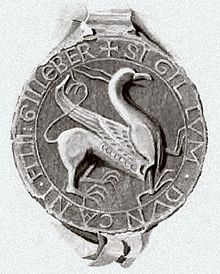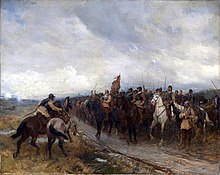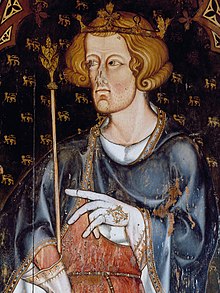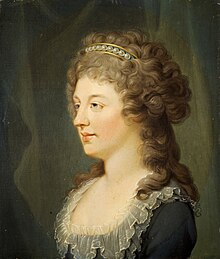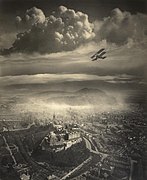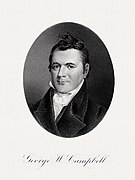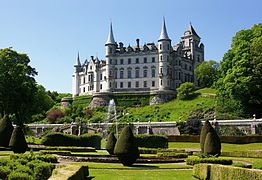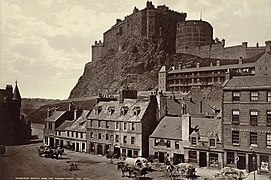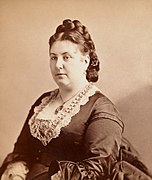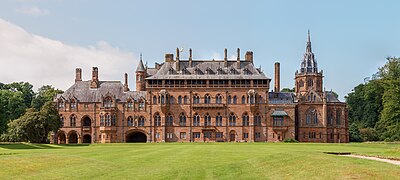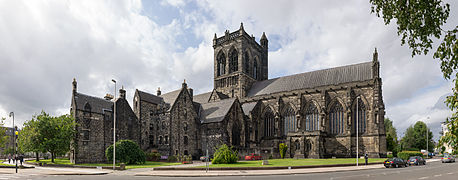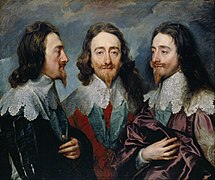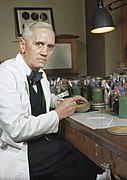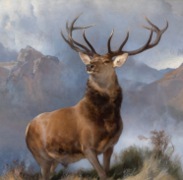Portal:Scotland/Featured
Tools
Actions
General
Print/export
In other projects
Appearance
From Wikipedia, the free encyclopedia
The Scotland Portal
View from An Teallach
| Main Page | Selected articles 1 | Selected articles 2 | Selected biographies | Selected quotes | Selected pictures | Featured Content | Categories & Topics |
Selection of featured articles
-
Image 1

SNAE expedition ship Scotia, in the ice at Laurie Island, South Orkneys, 1903–1904
The Scottish National Antarctic Expedition (SNAE), 1902–1904, was organised and led by William Speirs Bruce, a natural scientist and former medical student from the University of Edinburgh. Although overshadowed in terms of prestige by Robert Falcon Scott's concurrent Discovery Expedition, the SNAE completed a full programme of exploration and scientific work. Its achievements included the establishment of a staffed meteorological station, the first in Antarctic territory, and the discovery of new land to the east of the Weddell Sea. Its large collection of biological and geological specimens, together with those from Bruce's earlier travels, led to the establishment of the Scottish Oceanographical Laboratory in 1906.
Bruce had spent most of the 1890s engaged on expeditions to the Antarctic and Arctic regions, and by 1899 was Britain's most experienced polar scientist. In March of that year, he applied to join the Discovery Expedition; however, his proposal to extend that expedition's field of work into the Weddell Sea quadrant, using a second ship, was dismissed as "mischievous rivalry" by Royal Geographical Society (RGS) president Sir Clements Markham. Bruce reacted by obtaining independent finance; his venture was supported and promoted by the Royal Scottish Geographical Society. (Full article...) -
Image 2
The Battle of Blenheim (German: Zweite Schlacht bei Höchstädt; French: Bataille de Höchstädt; Dutch: Slag bij Blenheim) fought on 13 August [O.S. 2 August] 1704, was a major battle of the War of the Spanish Succession. The overwhelming Allied victory ensured the safety of Vienna from the Franco-Bavarian army, thus preventing the collapse of the reconstituted Grand Alliance.
Louis XIV of France sought to knock the Holy Roman Emperor, Leopold, out of the war by seizing Vienna, the Habsburg capital, and gain a favourable peace settlement. The dangers to Vienna were considerable: Maximilian II Emanuel, Elector of Bavaria, and Marshal Ferdinand de Marsin's forces in Bavaria threatened from the west, and Marshal Louis Joseph de Bourbon, duc de Vendôme's large army in northern Italy posed a serious danger with a potential offensive through the Brenner Pass. Vienna was also under pressure from Rákóczi's Hungarian revolt from its eastern approaches. Realising the danger, the Duke of Marlborough resolved to alleviate the peril to Vienna by marching his forces south from Bedburg to help maintain Emperor Leopold within the Grand Alliance. (Full article...) -
Image 3A view of Neilston from the southwest, with the city of Glasgow in the distance
Neilston (Scots: Neilstoun, Scottish Gaelic: Baile Nèill, pronounced [paləˈnɛːʎ]) is a village and parish in East Renfrewshire in the west central Lowlands of Scotland. It is in the Levern Valley, two miles (three kilometres) southwest of Barrhead, the last remaining town in greater Glasgow to operate trams, 3+3⁄4 miles (6 kilometres) south of Paisley, and 5+3⁄4 miles (9.5 kilometres) south-southwest of Renfrew, at the southwestern fringe of the Greater Glasgow conurbation. Neilston is a dormitory village with a resident population of just over 5,000 people.
Neilston is mentioned in documents from the 12th century, when the feudal lord Robert de Croc, endowed a chapel to Paisley Abbey to the North. Neilston Parish Church—a Category B listed building—is said to be on the site of this original chapel and has been at the centre of the community since 1163. Little remains of the original structure. Before industrialisation, Neilston was a scattered farming settlement composed of a series of single-storey houses, many of them thatched. Some domestic weaving was carried out using local flax. Water power from nearby streams ground corn and provided a suitable environment for bleaching the flax. (Full article...) -
Image 4Portrait by John de Critz, 1605
Anne of Denmark (Danish: Anna; 12 December 1574 – 2 March 1619) was the wife of King James VI and I. She was Queen of Scotland from their marriage on 20 August 1589 and Queen of England and Ireland from the union of the Scottish and English crowns on 24 March 1603 until her death in 1619.
The second daughter of King Frederick II of Denmark and Sophie of Mecklenburg-Güstrow, Anne married James at age 14. They had three children who survived infancy: Henry Frederick, Prince of Wales, who predeceased his parents; Princess Elizabeth, who became Queen of Bohemia; and James's future successor, Charles I. Anne demonstrated an independent streak and a willingness to use factional Scottish politics in her conflicts with James over the custody of Prince Henry and his treatment of her friend Beatrix Ruthven. Anne appears to have loved James at first, but the couple gradually drifted and eventually lived apart, though mutual respect and a degree of affection survived. (Full article...) -
Image 5
John Wark (born 4 August 1957) is a Scottish former footballer who spent most of his playing time with Ipswich Town. He won a record four Player of the Year awards before becoming one of the four inaugural members of the club's Hall of Fame. Wark had long spells at the club, which bookended his career, and a third, brief interlude dividing his briefer periods at Liverpool and Middlesbrough. A versatile player, Wark played most of his professional games as a midfielder, although he sometimes played as a central defender and on occasion as a striker.
Born in Glasgow, Wark represented Scotland in international football, winning 29 caps and scoring seven goals. This included selection for Scotland in the 1982 FIFA World Cup in which he made three appearances and scored twice. (Full article...) -
Image 6
HMS Royal Oak was one of five Revenge-class battleships built for the Royal Navy during the First World War. Completed in 1916, the ship first saw combat at the Battle of Jutland as part of the Grand Fleet. In peacetime, she served in the Atlantic, Home and Mediterranean fleets, more than once coming under accidental attack. Royal Oak drew worldwide attention in 1928 when her senior officers were controversially court-martialled, an event that brought considerable embarrassment to what was then the world's largest navy. Attempts to modernise Royal Oak throughout her 25-year career could not fix her fundamental lack of speed and, by the start of the Second World War, she was no longer suitable for front-line duty.
On 14 October 1939, Royal Oak was anchored at Scapa Flow in Orkney, Scotland, when she was torpedoed by the German submarine U-47. Of Royal Oak's complement of 1,234 men and boys, 835 were killed that night or died later of their wounds. The loss of the outdated ship—the first of five Royal Navy battleships and battlecruisers sunk in the Second World War—did little to affect the numerical superiority enjoyed by the British navy and its Allies, but it had a considerable effect on wartime morale. The raid made an immediate celebrity and war hero of the U-boat commander, Günther Prien, who became the first German submarine officer to be awarded the Knight's Cross of the Iron Cross. Before the sinking of Royal Oak, the Royal Navy had considered the naval base at Scapa Flow impregnable to submarine attack, but U-47's raid demonstrated that the German navy was capable of bringing the war to British home waters. The shock resulted in rapid changes to dockland security and the construction of the Churchill Barriers around Scapa Flow, with the added advantage of being topped by roads running between the islands. (Full article...) -
Image 7
Captain Sir Murray Maxwell, CB, FRS (10 September 1775 – 26 June 1831) was a British Royal Navy officer who served with distinction in the late eighteenth and early nineteenth centuries, particularly during the French Revolutionary and Napoleonic Wars. Maxwell first gained recognition as one of the British captains involved in the successful Adriatic campaign of 1807–1814, during which he was responsible for the destruction of a French armaments convoy at the action of 29 November 1811. As a result of further success in the Mediterranean, Maxwell was given increasingly important commissions and, despite the loss of his ship HMS Daedalus off Ceylon in 1813, was appointed to escort the British Ambassador to China in 1816.
The voyage to China subsequently became famous when Maxwell's ship HMS Alceste was wrecked in the Gaspar Strait, and he and his crew became stranded on a nearby island. The shipwrecked sailors ran short of food and were repeatedly attacked by Malay pirates, but thanks to Maxwell's leadership there were no deaths. Eventually rescued by a British East India Company ship, the party returned to Britain as popular heroes, Maxwell being especially commended. He was knighted for his services, and made a brief and unsuccessful foray into politics before resuming his naval career. In 1831 Maxwell was appointed Lieutenant Governor of Prince Edward Island, but fell ill and died before he could take up the post. (Full article...) -
Image 8
John Knox (c. 1514 – 24 November 1572) was a Scottish minister, Reformed theologian, and writer who was a leader of the country's Reformation. He was the founder of the Church of Scotland.
Born in Giffordgate, a street in Haddington, East Lothian, Knox is believed to have been educated at the University of St Andrews and worked as a notary-priest. Influenced by early church reformers such as George Wishart, he joined the movement to reform the Scottish Church. He was caught up in the ecclesiastical and political events that involved the murder of Cardinal David Beaton in 1546 and the intervention of the regent Mary of Guise. He was taken prisoner by French forces the following year and exiled to England on his release in 1549. (Full article...) -
Image 9

One of six kelpies in the globe fountain at Shuttle Row near to Blantyre, South Lanarkshire, Scotland
A kelpie, or water kelpie (Scottish Gaelic: each-uisge), is a shape-shifting spirit inhabiting lochs in Irish and Scottish folklore. It is usually described as a grey or white horse-like creature, able to adopt human form. Some accounts state that the kelpie retains its hooves when appearing as a human, leading to its association with the Christian idea of Satan as alluded to by Robert Burns in his 1786 poem "Address to the Devil".
Almost every sizeable body of water in Scotland has an associated kelpie story, but the most extensively reported is that of Loch Ness. The kelpie has counterparts across the world, such as the Germanic nixie, the wihwin of Central America and the Australian bunyip. The origins of narratives about the creature are unclear, but the practical purposes of keeping children away from dangerous stretches of water and warning young women to be wary of handsome strangers has been noted in secondary literature. (Full article...) -
Image 10Walter Weir Wilson Donaldson (2 February 1907 – 24 May 1973) was a Scottish professional snooker and billiards player. He contested eight consecutive world championship finals against Fred Davis from 1947 to 1954, and won the title in 1947 and 1950. Donaldson was known for his long potting and his consistency when playing, and had an aversion to the use of side. In 2012, he was inducted posthumously into the World Professional Billiards and Snooker Association's World Snooker Hall of Fame.
Donaldson became a professional player shortly after winning the under-16's British Junior English Billiards Championship in 1922 and won the Scottish professional billiards title six times. He first competed in the World Snooker Championship in 1933, but after a heavy defeat by Joe Davis did not enter again until 1939. After serving in the Fourth Indian Division during World War II, Donaldson entered the 1946 World Championship, where he lost to Davis in his first match. As a player that did not reach the championship final, he was eligible to enter the 1946 Albany Club Professional Snooker Tournament, which he won. Following Joe Davis's retirement from the World Championship in 1946, Donaldson practised intensively and won the 1947 Championship by defeating Fred Davis in the final. Davis won the following two championships, with Donaldson taking the next and then being runner-up to Davis for the next four years. Donaldson then retired from World Championship competition, although he continued to play in the News of the World Snooker Tournament until 1959. (Full article...) -
Image 11
Dunnottar Castle in the Mearns occupies one of the best defensive locations in Great Britain. The site was in use throughout the High Middle Ages, and the castle itself dates to the fourteenth century.
The High Middle Ages of Scotland encompass Scotland in the era between the death of Domnall II in 900 AD and the death of King Alexander III in 1286, which was an indirect cause of the Wars of Scottish Independence.
At the close of the ninth century, various competing kingdoms occupied the territory of modern Scotland. Scandinavian influence was dominant in the northern and western islands, Brythonic culture in the southwest, the Anglo-Saxon or English Kingdom of Northumbria in the southeast and the Pictish and Gaelic Kingdom of Alba in the east, north of the River Forth. By the tenth and eleventh centuries, northern Great Britain was increasingly dominated by Gaelic culture, and by the Gaelic regal lordship of Alba, known in Latin as either Albania or Scotia, and in English as "Scotland". From its base in the east, this kingdom acquired control of the lands lying to the south and ultimately the west and much of the north. It had a flourishing culture, comprising part of the larger Gaelic-speaking world and an economy dominated by agriculture and trade. (Full article...) -
Image 12
HMS Hood (pennant number 51) was a battlecruiser of the Royal Navy (RN). Hood was the first of the planned four Admiral-class battlecruisers to be built during the First World War. Already under construction when the Battle of Jutland occurred in mid-1916, that battle revealed serious flaws in her design, and despite drastic revisions she was completed four years later. For this reason, she was the only ship of her class to be completed, as the Admiralty decided it would be better to start with a clean design on succeeding battlecruisers, leading to the never-built G-3 class. Despite the appearance of newer and more modern ships, Hood remained the largest warship in the world for 20 years after her commissioning, and her prestige was reflected in her nickname, "The Mighty Hood".
Hood was involved in many showing-the-flag exercises between her commissioning in 1920 and the outbreak of war in 1939, including training exercises in the Mediterranean Sea and a circumnavigation of the globe with the Special Service Squadron in 1923 and 1924. She was attached to the Mediterranean Fleet following the outbreak of the Second Italo-Ethiopian War in 1935. When the Spanish Civil War broke out the following year, Hood was officially assigned to the Mediterranean Fleet until she had to return to Britain in 1939 for an overhaul. By this time, advances in naval gunnery had reduced Hood's usefulness. She was scheduled to undergo a major rebuild in 1941 to correct these issues, but the outbreak of the Second World War in September 1939 kept the ship in service without the upgrades. (Full article...) -
Image 13

The Little Minch, home to the blue men
The blue men of the Minch, also known as storm kelpies (Scottish Gaelic: na fir ghorma Scottish Gaelic pronunciation: [nə fiɾʲ ˈɣɔɾɔmə]), are mythological creatures inhabiting the stretch of water between the northern Outer Hebrides and mainland Scotland, looking for sailors to drown and stricken boats to sink. They appear to be localised to the Minch and surrounding areas to the north and as far east as Wick, unknown in other parts of Scotland and without counterparts in the rest of the world.
Apart from their blue colour, the mythical creatures look much like humans, and are about the same size. They have the power to create storms, but when the weather is fine they float sleeping on or just below the surface of the water. The blue men swim with their torsos raised out of the sea, twisting and diving as porpoises do. They are able to speak, and when a group approaches a ship its chief may shout two lines of poetry to the master of the vessel and challenge him to complete the verse. If the skipper fails in that task then the blue men will attempt to capsize his ship. (Full article...) -
Image 14
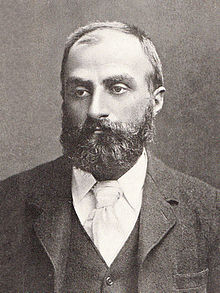
William Speirs Bruce FRSE (1 August 1867 – 28 October 1921) was a British naturalist, polar scientist and oceanographer who organised and led the Scottish National Antarctic Expedition (SNAE, 1902–04) to the South Orkney Islands and the Weddell Sea. Among other achievements, the expedition established the first permanent weather station in Antarctica. Bruce later founded the Scottish Oceanographical Laboratory in Edinburgh, but his plans for a transcontinental Antarctic march via the South Pole were abandoned because of lack of public and financial support.
In 1892 Bruce gave up his medical studies at the University of Edinburgh and joined the Dundee Whaling Expedition to Antarctica as a scientific assistant. This was followed by Arctic voyages to Novaya Zemlya, Spitsbergen and Franz Josef Land. In 1899 Bruce, by then Britain's most experienced polar scientist, applied for a post on Robert Falcon Scott's Discovery Expedition, but delays over this appointment and clashes with Royal Geographical Society (RGS) president Sir Clements Markham led him instead to organise his own expedition, and earned him the permanent enmity of the geographical establishment in London. Although Bruce received various awards for his polar work, including an honorary doctorate from the University of Aberdeen, neither he nor any of his SNAE colleagues were recommended by the RGS for the prestigious Polar Medal. (Full article...) -
Image 15The Scotland national football team represents Scotland in men's international football and is controlled by the Scottish Football Association. They compete in three major professional tournaments: the FIFA World Cup, UEFA Nations League, and the UEFA European Championship. Scotland, as a country of the United Kingdom, are not a member of the International Olympic Committee (as Scottish athletes compete for Great Britain), and therefore the national team does not compete in the Olympic Games. The majority of Scotland's home matches are played at the national stadium, Hampden Park.
Scotland are the joint oldest national football team in the world, alongside England, whom they played in the world's first international football match in 1872. Scotland has a long-standing rivalry with England, whom they played annually from 1872 until 1989. The teams have met only nine times since then, most recently in a friendly in September 2023. (Full article...) -
Image 16

This painting by John Rogers Herbert depicts a particularly controversial speech before the Assembly by Philip Nye against presbyterian church government.
The Westminster Assembly of Divines was a council of divines (theologians) and members of the English Parliament appointed from 1643 to 1653 to restructure the Church of England. Several Scots also attended, and the Assembly's work was adopted by the Church of Scotland. As many as 121 ministers were called to the Assembly, with nineteen others added later to replace those who did not attend or could no longer attend. It produced a new Form of Church Government, a Confession of Faith or statement of belief, two catechisms or manuals for religious instruction (Shorter and Larger), and a liturgical manual, the Directory for Public Worship, for the Churches of England and Scotland. The Confession and catechisms were adopted as doctrinal standards in the Church of Scotland and other Presbyterian churches, where they remain normative. Amended versions of the Confession were also adopted in Congregational and Baptist churches in England and New England in the seventeenth and eighteenth centuries. The Confession became influential throughout the English-speaking world, but especially in American Protestant theology.
The Assembly was called by the Long Parliament before and during the beginning of the First English Civil War. The Long Parliament was influenced by Puritanism, a religious movement which sought further reform of the church. They were opposed to the religious policies of King Charles I and William Laud, Archbishop of Canterbury. As part of a military alliance with Scotland, Parliament agreed that the outcome of the Assembly would bring the English Church into closer conformity with the Church of Scotland. The Scottish Church was governed by a system of elected assemblies of elders called presbyterianism, rather than rule by bishops, called episcopalianism, which was used in the English church. Scottish commissioners attended and advised the Assembly as part of the agreement. Disagreements over church government caused open division in the Assembly, despite attempts to maintain unity. The party of divines who favoured presbyterianism was in the majority, but the congregationalist party, which held greater influence in the military, favoured autonomy for individual congregations rather than the subjection of congregations to regional and national assemblies entailed in presbyterianism. Parliament eventually adopted a presbyterian form of government but lacked the power to implement it. During the Restoration of the monarchy in 1660, all of the documents of the Assembly were repudiated and episcopal church government was reinstated in England. (Full article...) -
Image 17

Margaret Macpherson Grant (27 April 1834 – 14 April 1877) was a Scottish heiress and philanthropist. Born in Aberlour parish to a local surgeon, she was educated in Hampshire, and was left an only child when her elder brother died in India in 1852. Two years later, she inherited a large fortune from her uncle, Alexander Grant, an Aberlour-born planter and merchant who had become rich in Jamaica.
Macpherson Grant took up residence in Aberlour House, which had been built for her uncle by William Robertson. She lived unconventionally for a woman of her time, dressing in a manner one newspaper called "manly", and entering into what was described as a form of marriage with a female companion, Charlotte Temple, whom she had met in London in 1864. Macpherson Grant donated generously to charitable enterprises, especially those associated with the Scottish Episcopal Church, establishing an orphanage (now the Aberlour Child Care Trust) and founding St Margaret's Episcopal Church in Aberlour. She drank heavily, and despite attempts by friends and family members to persuade her to stop, she always relapsed into alcoholism. (Full article...) -
Image 18
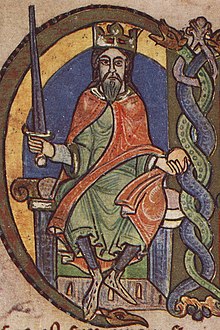
David I or Dauíd mac Maíl Choluim (Modern Gaelic: Daibhidh I mac [Mhaoil] Chaluim; c. 1084 – 24 May 1153) was a 12th century ruler and saint who was Prince of the Cumbrians from 1113 to 1124 and later King of Scotland from 1124 to 1153. The youngest son of King Malcolm III and Queen Margaret, David spent most of his childhood in Scotland but was exiled to England temporarily in 1093. Perhaps after 1100, he became a dependent at the court of King Henry I of England, by whom he was influenced.
When David's brother Alexander I died in 1124, David chose, with the backing of Henry I, to take the Kingdom of Alba (Scotland) for himself. He was forced to engage in warfare against his rival and nephew, Máel Coluim mac Alaxandair. Subduing the latter seems to have taken David ten years, a struggle that involved the destruction of Óengus, Mormaer of Moray. David's victory allowed expansion of control over more distant regions theoretically part of his Kingdom. After the death of his former patron Henry I, David supported the claims of Henry's daughter and his own niece, Empress Matilda, to the throne of England. In the process, he came into conflict with King Stephen and was able to expand his power in northern England, despite his defeat at the Battle of the Standard in 1138. David I is a saint of the Catholic Church, with his feast day celebrated on 24 May. (Full article...) -
Image 19
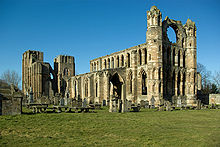
Elgin Cathedral, a historic ruin in Elgin, Moray, northeast Scotland, was dedicated to the Holy Trinity. It was established in 1224 on land granted by King Alexander II and stood outside the burgh of Elgin, close to the River Lossie. It replaced the cathedral at Spynie located 3 kilometres (2 mi) to the north, which was served by a small chapter of eight clerics. By 1226, the new and developing cathedral was staffed with 18 canons, a number that increased to 23 by 1242. A damaging fire in 1270 led to significant enlargement. It remained unscathed during the Wars of Scottish Independence but suffered extensive fire damage in 1390 when attacked by Robert III's brother Alexander Stewart, Earl of Buchan, also known as the Wolf of Badenoch. In 1402, the cathedral precinct faced another incendiary attack by the Lord of the Isles followers.
As the cathedral grew, so did the number of clerics and craftsmen. Repairs following the fires of 1270 and 1390 resulted in the choir's doubling in length and the addition of outer aisles to both the nave and choir. While some parts of walls retain their full height, others are at foundation level, yet the overall cruciform shape is still discernible. A mostly intact octagonal chapter house dates from the major enlargement after the fire of 1270. The near intact gable wall above the double door entrance linking the west towers was rebuilt after the fire of 1390. It contains fragments of a large rose window with remnants of tracery work. The transepts and the south aisle of the choir contain recessed and chest tombs with effigies of bishops and knights. The now grass-covered floor bears large flat slabs marking early graves. The residences of the dignitaries, canons and chaplains within the chanonry were also destroyed during the fires of 1270, 1390 and 1402, forming part of the overall reconstruction process. Only the precentor's manse remains substantially intact, while two others have been incorporated into private buildings. Both west front towers, part of the initial construction, are mostly complete. A massive protective wall surrounded the cathedral precinct, but only two small sections have survived. Of the wall's four access gates, only the Pans Port remains. (Full article...) -
Image 20Asahi (朝日, Morning Sun) was a pre-dreadnought battleship built for the Imperial Japanese Navy (IJN) in the late 1890s. As Japan lacked the industrial capacity to build such warships itself, the ship was designed and built in the United Kingdom. Shortly after her arrival in Japan, she became flagship of the Standing Fleet, the IJN's primary combat fleet. She participated in every major naval battle of the Russo-Japanese War of 1904–1905 and was lightly damaged during the Battle of the Yellow Sea and the Battle of Tsushima. Asahi saw no combat during World War I, although the ship participated in the Siberian Intervention in 1918.
Reclassified as a coastal defence ship in 1921, Asahi was disarmed two years later to meet the terms of the Washington Naval Treaty, after which she served as a training and submarine depot ship. She was modified into a submarine salvage and rescue ship before being placed in reserve in 1928. Asahi was recommissioned in late 1937, after the start of the Second Sino-Japanese War, and used to transport Japanese troops. In 1938, she was converted into a repair ship and based first at Japanese-occupied Shanghai, China, and then Cam Ranh Bay, French Indochina, from late 1938 to 1941. The ship was transferred to occupied Singapore in early 1942 to repair a damaged light cruiser and ordered to return home in May. She was sunk en route by the American submarine USS Salmon, although most of her crew survived. (Full article...) -
Image 21
General Gregor MacGregor (24 December 1786 – 4 December 1845) was a Scottish soldier, adventurer, and confidence trickster who attempted from 1821 to 1837 to draw British and French investors and settlers to "Poyais", a fictional Central American territory that he claimed to rule as "Cazique". Hundreds invested their savings in supposed Poyaisian government bonds and land certificates, while about 250 emigrated to MacGregor's invented country in 1822–23 to find only an untouched jungle; more than half of them died. Seen as a contributory factor to the "Panic of 1825", MacGregor's Poyais scheme has been called one of the most brazen confidence tricks in history.
From the Clan Gregor, MacGregor was an officer in the British Army from 1803 to 1810; he served in the Peninsular War. He joined the republican side in the Venezuelan War of Independence in 1812, quickly became a general and, over the next four years, operated against the Spanish on behalf of both Venezuela and its neighbour New Granada. His successes included a difficult month-long fighting retreat through northern Venezuela in 1816. He captured Amelia Island in 1817 under a mandate from revolutionary agents to conquer Florida from the Spanish, and there proclaimed a short-lived "Republic of the Floridas". He then oversaw two calamitous operations in New Granada during 1819 that each ended with his abandoning British volunteer troops under his command. (Full article...) -
Image 22Burnt Candlemas was a failed invasion of Scotland in early 1356 by an English army commanded by King Edward III, and was the last campaign of the Second War of Scottish Independence. Tensions on the Anglo-Scottish border led to a military build-up by both sides in 1355. In September a nine-month truce was agreed, and most of the English forces left for northern France to take part in a campaign of the concurrent Hundred Years' War. A few days after agreeing the truce, the Scots, encouraged and subsidised by the French, broke it, invading and devastating Northumberland. In late December the Scots escaladed and captured the important English-held border town of Berwick-on-Tweed and laid siege to its castle. The English army redeployed from France to Newcastle in northern England.
The English advanced to Berwick, retaking the town, and moved to Roxburgh in southern Scotland by mid-January 1356. From there they advanced on Edinburgh, leaving a trail of devastation 50–60 miles (80–100 km) wide behind them. The Scots practised a scorched earth policy, refusing battle and removing or destroying all food in their own territory. The English reached and burnt Edinburgh and were resupplied by sea at Haddington. Edward intended to march on Perth, but contrary winds prevented the movement of the fleet he would need to supply his army. While waiting for a better wind, the English despoiled Lothian so thoroughly that the episode became known as "Burnt Candlemas". This was a reference to the custom of the time of taking one's annual stock of candles to the local church on 2 February to be blessed in a ceremony known as candlemas; they were then used over the rest of the year. (Full article...) -
Image 23
Whitelee Wind Farm is operated by Scottish Power Renewables and is the largest on-shore wind farm in the United Kingdom with a total capacity of 539 megawatts (MW).
The production of renewable energy in Scotland is a topic that came to the fore in technical, economic, and political terms during the opening years of the 21st century. The natural resource base for renewable energy is high by European, and even global standards, with the most important potential sources being wind, wave, and tide. Renewables generate almost all of Scotland's electricity, mostly from the country's wind power.
In 2020, Scotland had 12 gigawatts (GW) of renewable electricity capacity, which produced about a quarter of total UK renewable generation. In decreasing order of capacity, Scotland's renewable generation comes from onshore wind, hydropower, offshore wind, solar PV and biomass. Scotland exports much of this electricity. On 26 January 2024, the Scottish Government confirmed that Scotland generated the equivalent of 113% of Scotland's electricity consumption from renewable energy sources, making it the highest percentage figure ever recorded for renewable energy production in Scotland. It was hailed as "a significant milestone in Scotland's journey to net zero" by the Cabinet Secretary for Wellbeing Economy, Fair Work and Energy, Neil Gray. It becomes the first time that Scotland produced more renewable energy than it actually consumed, and demonstrates the "enormous potential of Scotland's green economy" as claimed by Gray. (Full article...) -
Image 24
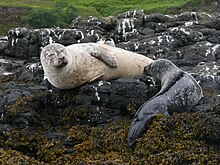
A grey seal (Halichoerus grypus) feeding a pup, island of Skye.
The fauna of Scotland is generally typical of the northwest European part of the Palearctic realm, although several of the country's larger mammals were hunted to extinction in historic times and human activity has also led to various species of wildlife being introduced. Scotland's diverse temperate environments support 62 species of wild mammals, including a population of wild cats, important numbers of grey and harbour seals and the most northerly colony of bottlenose dolphins in the world.
Many populations of moorland birds, including the black and red grouse, live here, and the country has internationally significant nesting grounds for seabirds such as the northern gannet. The golden eagle has become a national icon, and white-tailed eagles and ospreys have recently re-colonised the land. The Scottish crossbill is the only endemic vertebrate species in the UK. (Full article...) -
Image 25
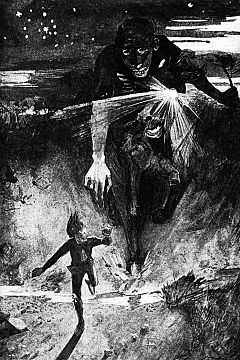
The nuckelavee chasing an islander, painting by James Torrance (1859–1916).
The nuckelavee ( /nʌklɑːˈviː/) or nuckalavee is a horse-like demon from Orcadian folklore that combines equine and human elements. British folklorist Katharine Briggs called it "the nastiest" of all the demons of Scotland's Northern Isles. The nuckelavee's breath was thought to wilt crops and sicken livestock, and the creature was held responsible for droughts and epidemics on land despite being predominantly a sea-dweller.
A graphic description of the nuckelavee as it appears on land was given by an islander who claimed to have had a confrontation with it, but accounts describing the details of the creature's appearance are inconsistent. In common with many other sea-monsters, it is unable to tolerate fresh water, therefore, those it is pursuing have only to cross a river or stream to be rid of it. The nuckelavee is kept in confinement during the summer months by the Mither o' the Sea, an ancient Orcadian spirit, and the only one able to control it. (Full article...) -
Image 26
Alexander Frederick Douglas-Home, Baron Home of the Hirsel, KT, PC (/ˈhjuːm/ HEWM; 2 July 1903 – 9 October 1995), known as Lord Dunglass from 1918 to 1951 and the Earl of Home from 1951 to 1963, was a British statesman and Conservative Party politician who served as Prime Minister of the United Kingdom from 1963 to 1964. He was the last prime minister to hold office while being a member of the House of Lords, before renouncing his peerage and taking up a seat in the House of Commons for the remainder of his premiership. His reputation, however, rests more on his two stints as Foreign Secretary than on his brief premiership.
Within six years of first entering the House of Commons in 1931, Douglas-Home (then called by the courtesy title Lord Dunglass) became a parliamentary aide to Neville Chamberlain, witnessing first-hand Chamberlain's efforts as prime minister to preserve peace through appeasement in the two years before the outbreak of the Second World War. In 1940 Douglas-Home was diagnosed with spinal tuberculosis and was immobilised for two years. By the later stages of the war he had recovered enough to resume his political career, but he lost his seat in the general election of 1945. He regained it in 1950, but the following year he left the Commons when, on the death of his father, he inherited the earldom of Home and thereby became a member of the House of Lords. Under the premierships of Winston Churchill, Anthony Eden and Harold Macmillan he was appointed to a series of increasingly senior posts, including Leader of the House of Lords and Foreign Secretary. In the latter post, which he held from 1960 to 1963, he supported United States resolve in the Cuban Missile Crisis and in August 1963 was the United Kingdom's signatory to the Partial Nuclear Test Ban Treaty. (Full article...) -
Image 27
Jocelin (or Jocelyn) (died 1199) was a twelfth-century Cistercian monk and cleric who became the fourth Abbot of Melrose before becoming Bishop of Glasgow, Scotland. He was probably born in the 1130s, and in his teenage years became a monk of Melrose Abbey. He rose in the service of Abbot Waltheof, and by the time of the short abbacy of Waltheof's successor Abbot William, Jocelin had become prior. Then in 1170 Jocelin himself became abbot, a position he held for four years. Jocelin was responsible for promoting the cult of the emerging Saint Waltheof, and in this had the support of Enguerrand, Bishop of Glasgow.
His Glasgow connections and political profile were already well-established enough that in 1174 Jocelin succeeded Enguerrand as Glasgow's bishop. As Bishop of Glasgow, he was a royal official. In this capacity he travelled abroad on several occasions, and performed the marriage ceremony between King William the Lion and Ermengarde de Beaumont, later baptising their son, the future King Alexander II. Among other things, he has been credited by modern historians as "the founder of the burgh of Glasgow and initiator of the Glasgow fair", as well as being one of the greatest literary patrons in medieval Scotland, commissioning the Life of St Waltheof, the Life of St Kentigern and the Chronicle of Melrose. (Full article...) -
Image 28Argus in harbour in 1918, painted in dazzle camouflage
HMS Argus was a British aircraft carrier that served in the Royal Navy from 1918 to 1944. She was converted from an ocean liner that was under construction when the First World War began and became the first aircraft carrier with a full-length flight deck that allowed wheeled aircraft to take off and land. After commissioning, the ship was involved for several years in the development of the optimum design for other aircraft carriers. Argus also evaluated various types of arresting gear, general procedures needed to operate a number of aircraft in concert and fleet tactics. The ship was too top-heavy as originally built, and had to be modified to improve her stability in the mid-1920s. She spent one brief deployment on the China Station in the late 1920s before being placed in reserve for budgetary reasons.
Argus was recommissioned and partially modernised shortly before the Second World War and served as a training ship for deck-landing practice until June 1940. The following month she made the first of her many ferry trips to the Western Mediterranean to fly off fighters to Malta; she was largely occupied in this task for the next two years. The ship also delivered aircraft to Murmansk, Russia, Takoradi in the Gold Coast, and Reykjavík, Iceland. By 1942, the Royal Navy was very short of aircraft carriers, and Argus was pressed into front-line service despite her lack of speed and armament. In June, she participated in Operation Harpoon, providing air cover for the Malta-bound convoy. In November, the ship provided air cover during Operation Torch, the invasion of French North Africa, and was slightly damaged by a bomb. After returning to the UK for repairs, Argus was used again for deck-landing practice until late September 1944. In December, she became an accommodation ship, and was listed for disposal in mid-1946. The ship was sold in late 1946 and scrapped the following year. (Full article...) -
Image 29
Shapinsay (/ˈʃæpɪnziː/, Scots: Shapinsee) is one of the Orkney Islands off the north coast of mainland Scotland. With an area of 29.5 square kilometres (11.4 sq mi), it is the eighth largest island in the Orkney archipelago. It is low-lying and, with a bedrock formed from Old Red Sandstone overlain by boulder clay, fertile, causing most of the area to be used for farming. Shapinsay has two nature reserves and is notable for its bird life. Balfour Castle, built in the Scottish Baronial style, is one of the island's most prominent features, a reminder of the Balfour family's domination of Shapinsay during the 18th and 19th centuries; the Balfours transformed life on the island by introducing new agricultural techniques. Other landmarks include a standing stone, an Iron Age broch, a souterrain and a salt-water shower.
There is one village on the island, Balfour, from which roll-on/roll-off car ferries sail to Kirkwall on the Orkney Mainland. At the 2011 census, Shapinsay had a population of 307. The economy of the island is primarily based on agriculture with the exception of a few small businesses that are largely tourism-related. A community-owned wind turbine was constructed in 2011. The island has a primary school but, in part due to improving transport links with mainland Orkney, no longer has a secondary school. Shapinsay's long history has given rise to various folk tales. (Full article...) -
Image 30
Causantín mac Áeda (Modern Gaelic: Còiseam mac Aoidh, anglicised Constantine II; born no later than 879; died 952) was an early King of Scotland, known then by the Gaelic name Alba. The Kingdom of Alba, a name which first appears in Constantine's lifetime, was situated in what is now Northern Scotland.
The core of the kingdom was formed by the lands around the River Tay. Its southern limit was the River Forth, northwards it extended towards the Moray Firth and perhaps to Caithness, while its western limits are uncertain. Constantine's grandfather Kenneth I (Cináed mac Ailpín, died 858) was the first of the family recorded as a king, but as king of the Picts. This change of title, from king of the Picts to king of Alba, is part of a broader transformation of Pictland and the origins of the Kingdom of Alba are traced to Constantine's lifetime. (Full article...) -
Image 31
The Most Ancient and Most Noble Order of the Thistle is an order of chivalry associated with Scotland. The current version of the order was founded in 1687 by King James VII of Scotland, who asserted that he was reviving an earlier order. The order consists of the sovereign and sixteen knights and ladies, as well as certain "extra" knights (members of the British royal family and foreign monarchs). The sovereign alone grants membership of the order; they are not advised by the government, as occurs with most other orders.
The order's primary emblem is the thistle, the national flower of Scotland. The motto is Nemo me impune lacessit (Latin for "No one provokes me with impunity"). The same motto appears on the Royal coat of arms of the United Kingdom for use in Scotland and pound coins minted in 1984, 1989, 1994, and 1999 (since withdrawn), and is also the motto of the Royal Scots Dragoon Guards, the Scots Guards, the Royal Regiment of Scotland, and The Black Watch (Royal Highland Regiment) of Canada. The patron saint of the order is St Andrew. (Full article...) -
Image 32Cullen House is a large house, about 1 kilometre (0.6 mi) south-west of the coastal town of Cullen in Moray, Scotland. It was the seat of the Ogilvies of Findlater, who went on to become the Earls of Findlater and Seafield, and it remained in their family until 1982. Building work started on the house in 1600, incorporating some of the stonework of an earlier building on the site. The house has been extended and remodelled several times by prominent architects such as James Adam, John Adam, and David Bryce. It has been described by the architectural historian Charles McKean as "one of the grandest houses in Scotland" and is designated a Category A listed building. The grounds were enlarged in the 1820s when the entire village of Cullen, save for Cullen Old Church, was demolished to make way for improvements to the grounds by Ludovick Ogilvy-Grant, 5th Earl of Seafield; a new village, closer to the coast, was constructed for the inhabitants. Within the grounds are a bridge, a rotunda and a gatehouse, each of which is individually listed as a Category A structure.
Twice in its history, the house has been captured and ransacked. It was taken by forces acting under the orders of the Marquess of Montrose in 1645 during the Wars of the Three Kingdoms. It was attacked again by a group of Jacobites during the rising of 1745, shortly before they were defeated at the Battle of Culloden. (Full article...) -
Image 33A 19th-century reproduction of an impression of Donnchadh's seal, surviving from a Melrose charter, depicting [according to antiquarian Henry Laing] a "winged dragon"; the inscription reads SIGILLUM DUNCANI FILII GILLEBER.. ("The seal of Donnchadh son of Gille-Brighde")
Donnchadh (Scottish Gaelic pronunciation: [ˈt̪ɔn̪ˠɔxəɣ]; Latin: Duncanus; English: Duncan) was a Gall-Gaidhil prince and Scottish magnate in what is now south-western Scotland, whose career stretched from the last quarter of the 12th century until his death in 1250. His father, Gille-Brighde of Galloway, and his uncle, Uhtred of Galloway, were the two rival sons of Fergus, Prince or Lord of Galloway. As a result of Gille-Brighde's conflict with Uhtred and the Scottish monarch William the Lion, Donnchadh became a hostage of King Henry II of England. He probably remained in England for almost a decade before returning north on the death of his father. Although denied succession to all the lands of Galloway, he was granted lordship over Carrick in the north.
Allied to John de Courcy, Donnchadh fought battles in Ireland and acquired land there that he subsequently lost. A patron of religious houses, particularly Melrose Abbey and North Berwick priory nunnery, he attempted to establish a monastery in his own territory, at Crossraguel. He married the daughter of Alan fitz Walter, a leading member of the family later known as the House of Stewart—future monarchs of Scotland and England. Donnchadh was the first mormaer or earl of Carrick, a region he ruled for more than six decades, making him one of the longest serving magnates in medieval Scotland. His descendants include the Bruce and Stewart Kings of Scotland, and probably the Campbell Dukes of Argyll. (Full article...) -
Image 34
The Burke and Hare murders were a series of sixteen murders committed over a period of about ten months in 1828 in Edinburgh, Scotland. They were undertaken by William Burke and William Hare, who sold the corpses to Robert Knox for dissection at his anatomy lectures.
Edinburgh was a leading European centre of anatomical study in the early 19th century, in a time when the demand for cadavers led to a shortfall in legal supply. Scottish law required that corpses used for medical research should only come from those who had died in prison, suicide victims, or from foundlings and orphans. The shortage of corpses led to an increase in body snatching by what were known as "resurrection men". Measures to ensure graves were left undisturbed—such as the use of mortsafes—exacerbated the shortage. When a lodger in Hare's house died, he turned to his friend Burke for advice; they decided to sell the body to Knox. They received what was, for them, the generous sum of £7 10s. A little over two months later, when Hare was concerned that a lodger with a fever would deter others from staying in the house, he and Burke murdered her and sold the body to Knox. The men continued their murder spree, probably with the knowledge of their wives. Their actions were uncovered after other lodgers discovered their last victim, Margaret Docherty, and contacted the police. (Full article...) -
Image 35Whisky Galore! is a 1949 British comedy film produced by Ealing Studios, starring Basil Radford, Bruce Seton, Joan Greenwood and Gordon Jackson. It was the directorial debut of Alexander Mackendrick; the screenplay was by Compton Mackenzie, an adaptation of his 1947 novel Whisky Galore, and Angus MacPhail. The story—based on a true event, the running aground of the SS Politician—concerns a shipwreck off a fictional Scottish island, the inhabitants of which have run out of whisky because of wartime rationing. The islanders find out the ship is carrying 50,000 cases of whisky, some of which they salvage, against the opposition of the local Customs and Excise men.
It was filmed on the island of Barra; the weather was so poor that the production over-ran its 10-week schedule by five weeks, and the film went £20,000 over budget. Michael Balcon, the head of the studio, was unimpressed by the initial cut of the film, and one of Ealing's directors, Charles Crichton, added footage and re-edited the film before its release. Like other Ealing comedies, Whisky Galore! explores the actions of a small insular group facing and overcoming a more powerful opponent. An unspoken sense of community runs through the film, and the story reflects a time when the British Empire was weakening. (Full article...) -
Image 36In the United Kingdom, representative peers were those peers elected by the members of the Peerage of Scotland and the Peerage of Ireland to sit in the British House of Lords. Until 1999, all members of the Peerage of England held the right to sit in the House of Lords; they did not elect a limited group of representatives. All peers who were created after 1707 as Peers of Great Britain and after 1801 as Peers of the United Kingdom held the same right to sit in the House of Lords.
Representative peers were introduced in 1707, when the Kingdom of England and the Kingdom of Scotland were united into the Kingdom of Great Britain. At the time there were 168 English and 154 Scottish peers. The English peers feared that the House of Lords would be swamped by the Scottish element, and consequently the election of a small number of representative peers to represent Scotland was negotiated. A similar arrangement was adopted when the Kingdom of Great Britain and the Kingdom of Ireland merged into the United Kingdom of Great Britain and Ireland in January 1801. (Full article...) -
Image 37Portrait by Peter Lely, 1648–49
Elizabeth Maitland, Duchess of Lauderdale (née Murray; 28 September 1626 – 5 June 1698) was a Scottish peeress. She was the eldest daughter of William Murray and his wife Catherine, the Earl and Countess of Dysart. She was raised in English court circles during the years leading up to the English Civil War and received a well-rounded education from her parents. Her first husband was Lionel Tollemache, with whom she had eleven children. In 1672, three years after Lionel's death, she married John Maitland and gained a prominent position in the restored court.
After her father's death, Maitland held the title of Countess of Dysart in her own right. After her remarriage in 1672, she was also the Duchess of Lauderdale. She was famous for the political influence she exercised and for her support for Charles II during his exile. As an associate of the secret Royalist organisation known as the Sealed Knot, she actively supported the return of the monarchy after the execution of Charles I. She was also a lifelong patron of artists, particularly Peter Lely. She died at the age of 71 at her family home, Ham House near Richmond by the Thames, and is buried in the nearby parish church. (Full article...) -
Image 38Portrait attributed to John de Critz, c. 1605
James VI and I (James Charles Stuart; 19 June 1566 – 27 March 1625) was King of Scotland as James VI from 24 July 1567 and King of England and Ireland as James I from the union of the Scottish and English crowns on 24 March 1603 until his death in 1625. Although he long tried to get both countries to adopt a closer political union, the kingdoms of Scotland and England remained sovereign states, with their own parliaments, judiciaries, and laws, ruled by James in personal union.
James was the son of Mary, Queen of Scots, and a great-great-grandson of Henry VII, King of England and Lord of Ireland, and thus a potential successor to all three thrones. He acceded to the Scottish throne at the age of thirteen months, after his mother was forced to abdicate in his favour. Four regents governed during his minority, which ended officially in 1578, though he did not gain full control of his government until 1583. In 1589, he married Anne of Denmark. Three of their children survived to adulthood: Henry Frederick, Elizabeth, and Charles. In 1603, James succeeded his cousin Elizabeth I, the last Tudor monarch of England and Ireland, who died childless. He continued to reign in all three kingdoms for 22 years, a period known as the Jacobean era, until his death in 1625. After the Union of the Crowns, he based himself in England (the largest of the three realms) from 1603, returning to Scotland only once, in 1617, and styled himself "King of Great Britain and Ireland". He was an advocate of a single parliament for England and Scotland. In his reign, the Plantation of Ulster and English colonisation of the Americas began. (Full article...) -
Image 39Cromwell at Dunbar, by Andrew Carrick Gow
The Anglo-Scottish war (1650–1652), also known as the Third Civil War, was the final conflict in the Wars of the Three Kingdoms, a series of armed conflicts and political machinations between shifting alliances of religious and political factions in England, Scotland and Ireland.
The 1650 English invasion of Scotland was a pre-emptive military incursion by the English Commonwealth's New Model Army, intended to allay the risk of Charles II invading England with a Scottish army. The First and Second English Civil Wars, in which English Royalists, loyal to Charles I, fought Parliamentarians for control of the country, took place between 1642 and 1648. When the Royalists were defeated for the second time the English government, exasperated by the duplicity of Charles I during negotiations, set up a High Court of Justice which found the King guilty of treason and executed him on 30 January 1649. At the time, England and Scotland were separate independent kingdoms, joined politically through a personal union; Charles I was, separately, both the King of Scotland, and the King of England. The Scots had fought in support of the English Parliamentarians in the First English Civil War, but sent an army in support of Charles I into England during the Second English Civil War. The Parliament of Scotland, which had not been consulted before the execution, declared his son, Charles II, King of Britain. (Full article...) -
Image 40
HMS Vanguard was a British fast battleship built during the Second World War and commissioned after the war ended. She was the largest and fastest of the Royal Navy's battleships, and the only ship of her class. Vanguard was the last battleship to be built in history.
The Royal Navy anticipated being outnumbered by the combined German and Japanese battleships in the early 1940s, and had therefore started building the Lion-class battleships. However, the time-consuming construction of the triple-16-inch (406 mm) turrets for the Lion class would delay their completion until 1943 at the earliest. The British had enough 15-inch (381 mm) guns and turrets in storage to allow one ship of a modified Lion-class design with four twin-15-inch turrets to be completed faster than the Lion-class vessels that had already been laid down. Work on Vanguard was started and stopped several times during the war, and her design was revised several times during her construction to reflect war experience. These stoppages and changes prevented her from being completed before the end of the war. (Full article...) -
Image 41The Second War of Scottish Independence broke out in 1332, when Edward Balliol led an English-backed invasion of Scotland. Balliol, the son of former Scottish king John Balliol, was attempting to make good his claim to the Scottish throne. He was opposed by Scots loyal to the occupant of the throne, eight-year-old David II. At the Battle of Dupplin Moor Balliol's force defeated a Scottish army ten times their size and Balliol was crowned king. Within three months David's partisans had regrouped and forced Balliol out of Scotland. He appealed to the English king, Edward III, who invaded Scotland in 1333 and besieged the important trading town of Berwick. A large Scottish army attempted to relieve it but was heavily defeated at the Battle of Halidon Hill. Balliol established his authority over most of Scotland, ceded to England the eight counties of south-east Scotland and did homage to Edward for the rest of the country as a fief.
As allies of Scotland via the Auld Alliance, the French were unhappy about an English expansion into Scotland and so covertly supported and financed David's loyalists. Balliol's allies fell out among themselves and he lost control of most of Scotland again by late 1334. In early 1335, the French attempted to broker a peace. However, the Scots were unable to agree on a position and Edward prevaricated while building a large army. He invaded in July and again overran most of Scotland. Tensions with France increased. Further French-sponsored peace talks failed in 1336; in May 1337, King Philip VI of France engineered a clear break between France and England, starting the Hundred Years' War. The Anglo-Scottish war became a subsidiary theatre of this larger Anglo-French war. Edward sent what troops he could spare to Scotland, in spite of which the English slowly lost ground in Scotland as they were forced to focus on the French theatre. Achieving his majority, David returned to Scotland from France in 1341; by 1342, the English had been cleared from north of the border. (Full article...) -
Image 42
The Great North of Scotland Railway (GNSR) was one of the two smallest of the five major Scottish railway companies prior to the 1923 Grouping, operating in the north-east of the country. Formed in 1845, it carried its first passengers the 39 miles (63 km) from Kittybrewster, in Aberdeen, to Huntly on 20 September 1854. By 1867 it owned 226+1⁄4 route miles (364.1 km) of line and operated over a further 61 miles (98 km).
The early expansion was followed by a period of forced economy, but in the 1880s the railway was refurbished, express services began to run and by the end of that decade there was a suburban service in Aberdeen. The railway operated its main line between Aberdeen and Keith and two routes west to Elgin, connections could be made at both Keith and Elgin for Highland Railway services to Inverness. There were other junctions with the Highland Railway at Boat of Garten and Portessie, and at Aberdeen connections for journeys south over the Caledonian and North British Railways. Its eventual area encompassed the three Scottish counties of Aberdeenshire, Banffshire and Moray, with short lengths of line in Inverness-shire and Kincardineshire. (Full article...) -
Image 43Portrait of Lady Grange by Sir John Baptiste de Medina c. 1710
Rachel Chiesley (baptised 4 February 1679 – 12 May 1745), usually known as Lady Grange, was the wife of Lord Grange, a Scottish lawyer with Jacobite sympathies. After 25 years of marriage and nine children, the Granges separated acrimoniously. When Lady Grange produced letters that she claimed were evidence of his treasonable plottings against the Hanoverian government in London, her husband had her kidnapped in 1732. She was incarcerated in various remote locations on the western seaboard of Scotland, including the Monach Isles, Skye and St Kilda.
Lady Grange's father was convicted of murder and she is known to have had a violent temper; initially her absence seems to have caused little comment. News of her plight eventually reached her home town of Edinburgh and an unsuccessful rescue attempt was undertaken by her lawyer, Thomas Hope of Rankeillor. She died in captivity, after being in effect imprisoned for over 13 years. Her life has been remembered in poetry, prose and plays. (Full article...) -
Image 44Cromwell at Dunbar, 1886, by Andrew Carrick Gow
The Battle of Dunbar was fought between the English New Model Army, under Oliver Cromwell, and a Scottish army commanded by David Leslie on 3 September 1650 near Dunbar, Scotland. The battle resulted in a decisive victory for the English. It was the first major battle of the 1650 invasion of Scotland, which was triggered by Scotland's acceptance of Charles II as king of Britain after the beheading of his father, Charles I on 30 January 1649.
After Charles I's execution, the English Rump Parliament established a republican Commonwealth in England. When their erstwhile ally, Scotland, recognised Charles II as king of all of Britain on 1 May 1650 and began recruiting an army to support him, the English dispatched the New Model Army, under the command of Cromwell. The army crossed into Scotland on 22 July, with a force of over 16,000 men. The Scots withdrew to Edinburgh, stripping the land of provisions. Cromwell attempted to draw the Scots out into a set piece battle, but they resisted, and Cromwell was unable to break through their defensive line. At the end of August, with his army weakened through disease and lack of food, Cromwell withdrew to the port of Dunbar. The Scottish army followed and took up an unassailable position on Doon Hill, overlooking the town. On 2 September, the Scots advanced towards Dunbar and the English took up positions outside the town. The English army was greatly weakened by sickness and lack of food, while many of the Scots' most experienced men had been dismissed in religious purges. (Full article...) -
Image 45Sir Hector MacLean's charge at Inverkeithing (1873 illustration)
The Battle of Inverkeithing was fought on 20 July 1651 between an English army under John Lambert and a Scottish army led by James Holborne as part of an English invasion of Scotland. The battle was fought near the isthmus of the Ferry Peninsula, to the south of Inverkeithing, after which it is named.
An English Parliamentary regime had tried, convicted, and executed Charles I, who was king of both Scotland and England in a personal union, in January 1649. The Scots recognised his son, also named Charles, as king of Britain and set about recruiting an army. An English army, under Oliver Cromwell, invaded Scotland in July 1650. The Scottish army, commanded by David Leslie, refused battle until 3 September when it was heavily defeated at the Battle of Dunbar. The English occupied Edinburgh and the Scots withdrew to the choke point of Stirling. For nearly a year all attempts to storm or bypass Stirling, or to draw the Scots out into another battle, failed. On 17 July 1651 1,600 English soldiers crossed the Firth of Forth at its narrowest point in specially constructed flat-bottomed boats and landed at North Queensferry on the Ferry Peninsula. The Scots sent forces to pen the English in and the English reinforced their landing. On 20 July the Scots moved against the English and in a short engagement were routed. (Full article...) -
Image 46
William McGregor (13 April 1846 – 20 December 1911) was a Scottish association football administrator in the Victorian era who was the founder of the Football League (now English Football League), the first organised association football league in the world.
After moving from Perthshire to Birmingham to set up business as a draper, McGregor became involved with local football club Aston Villa, which he helped to establish as one of the leading teams in England. He served the club for over 20 years in various capacities, including president, director and chairman. In 1888, frustrated by the regular cancellation of Villa's matches, McGregor organised a meeting of representatives of England's leading clubs, which led to the formation of the Football League, giving member clubs a guaranteed fixture list each season. This was instrumental in the transition of football from an amateur pastime to a professional business. (Full article...) -
Image 47Ramillies at anchor during the First World War, painted in dazzle camouflage
HMS Ramillies (pennant number: 07) was one of five Revenge-class super-dreadnought battleships built for the Royal Navy during the First World War. They were developments of the Queen Elizabeth-class battleships, with reductions in size and speed to offset increases in the armour protection whilst retaining the same main battery of eight 15-inch (381 mm) guns. Completed in late 1917, Ramillies saw no combat during the war as both the British and the German fleets had adopted a more cautious strategy by this time owing to the increasing threat of naval mines and submarines.
Ramillies spent the 1920s and 1930s alternating between the Atlantic Fleet and the Mediterranean Fleet. Whilst serving in the Mediterranean and Black Seas in the early 1920s, the ship went to Turkey twice in response to crises arising from the Greco-Turkish War, including the Great Fire of Smyrna in 1922. She also saw limited involvement during the Allied intervention in the Russian Civil War. The ship's interwar career was otherwise uneventful. With the outbreak of the Second World War in September 1939, Ramillies was initially assigned to escort duties in the North Atlantic. In May 1940, she was transferred to the Mediterranean Fleet as war with Italy loomed. After the Italians entered the war in June, Ramillies bombarded Italian ports in North Africa, escorted convoys to Malta, and supported the Taranto raid in November. (Full article...) -
Image 48
Edward I (17/18 June 1239 – 7 July 1307), also known as Edward Longshanks and the Hammer of the Scots, was King of England from 1272 to 1307. Concurrently, he was Lord of Ireland, and from 1254 to 1306 ruled Gascony as Duke of Aquitaine in his capacity as a vassal of the French king. Before his accession to the throne, he was commonly referred to as the Lord Edward. The eldest son of Henry III, Edward was involved from an early age in the political intrigues of his father's reign. In 1259, he briefly sided with a baronial reform movement, supporting the Provisions of Oxford. After reconciling with his father, he remained loyal throughout the subsequent armed conflict, known as the Second Barons' War. After the Battle of Lewes, Edward was held hostage by the rebellious barons, but escaped after a few months and defeated the baronial leader Simon de Montfort at the Battle of Evesham in 1265. Within two years, the rebellion was extinguished and, with England pacified, Edward left to join the Ninth Crusade to the Holy Land in 1270. He was on his way home in 1272 when he was informed of his father's death. Making a slow return, he reached England in 1274 and was crowned at Westminster Abbey.
Edward spent much of his reign reforming royal administration and common law. Through an extensive legal inquiry, he investigated the tenure of several feudal liberties. The law was reformed through a series of statutes regulating criminal and property law, but the King's attention was increasingly drawn towards military affairs. After suppressing a minor conflict in Wales in 1276–77, Edward responded to a second one in 1282–83 by conquering Wales. He then established English rule, built castles and towns in the countryside and settled them with English people. After the death of the heir to the Scottish throne, Edward was invited to arbitrate a succession dispute. He claimed feudal suzerainty over Scotland and invaded the country, and the ensuing First Scottish War of Independence continued after his death. Simultaneously, Edward found himself at war with France (a Scottish ally) after King Philip IV confiscated the Duchy of Gascony. The duchy was eventually recovered but the conflict relieved English military pressure against Scotland. By the mid-1290s, extensive military campaigns required high levels of taxation and this met with both lay and ecclesiastical opposition in England. In Ireland, he had extracted soldiers, supplies and money, leaving decay, lawlessness and a revival of the fortunes of his enemies in Gaelic territories. When the King died in 1307, he left to his son Edward II a war with Scotland and other financial and political burdens. (Full article...) -
Image 49Painting of Bruce by John Michael Wright, c. 1664
Sir William Bruce of Kinross, 1st Baronet (c. 1630 – 1710), was a Scottish gentleman-architect, "the effective founder of classical architecture in Scotland," as Howard Colvin observes. As a key figure in introducing the Palladian style into Scotland, he has been compared to the pioneering English architects Inigo Jones and Christopher Wren, and to the contemporaneous introducers of French style in English domestic architecture, Hugh May and Sir Roger Pratt.
Bruce was a merchant in Rotterdam during the 1650s, and played a role in the Restoration of Charles II in 1659. He carried messages between the exiled king and General Monck, and his loyalty to the king was rewarded with lucrative official appointments, including that of Surveyor General of the King's Works in Scotland, effectively making Bruce the "king's architect". His patrons included John Maitland, 1st Duke of Lauderdale, the most powerful man in Scotland at that time, and Bruce rose to become a member of Parliament, and briefly sat on the Scottish Privy Council. (Full article...) -
Image 50Portrait by Hugh Douglas Hamilton, Scottish National Portrait Gallery
Charlotte Stuart, styled Duchess of Albany (29 October 1753 – 17 November 1789) was the illegitimate daughter of the Jacobite pretender Charles Edward Stuart ("Bonnie Prince Charlie" or the "Young Pretender") and his only child to survive infancy.
Charlotte's mother was Clementina Walkinshaw, who was mistress to Charles Edward from 1752 until 1760. After years of abuse, Clementina left him, taking Charlotte with her. Charlotte spent most of her life in French convents, estranged from a father who refused to make any provision for her. Unable to marry, she herself became a mistress with illegitimate children, taking Ferdinand de Rohan, Archbishop of Bordeaux, as her lover. (Full article...)
Selection of good articles
-
Image 1
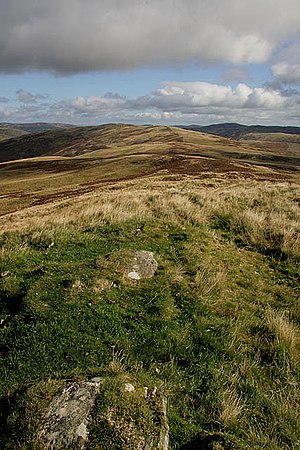
Ettrick Forest, previously a hunting reserve was opened up for settlement in this period
The geography of Scotland in the early modern era covers all aspects of the land in Scotland, including physical and human, between the sixteenth century and the beginnings of the Agricultural Revolution and industrialisation in the eighteenth century. The defining factor in the geography of Scotland is the distinction between the Highlands and Islands in the north and west and the Lowlands in the south and east. The Highlands were subdivided by the Great Glen and the Lowlands into the fertile Central Lowlands and the Southern Uplands. The Uplands and Highlands had a relatively short growing season, exacerbated by the Little Ice Age, which peaked towards the end of the seventeenth century.
A network of roads developed in the Lowlands in this period. Drover's roads, between the Highlands and north-east England, had become established by the end of the seventeenth century and a series of military roads were built and maintained as a response to the Jacobite risings in the eighteenth century. At the beginning of the period, most farming was based on the Lowland fermtoun or Highland baile, but a system of land ownership based on large estates emerged. This was the beginning of a process that would create a landscape of rectangular fields and carefully located farm complexes with interconnecting roads. There was an attempt improve agriculture, resulting in new crops, techniques and enclosures began to displace the run rig system and free pasture. (Full article...) -
Image 2

Clan Maclachlan, also known as Clan Lachlan, Clann Lachainn (Argyll), and Clann Lachlainn, is a Highland Scottish clan that historically centred on the lands of Strathlachlan (Srath Lachainn "Valley of Lachlan") on Loch Fyne, Argyll on the west coast of Scotland. The clan claims descent from Lachlan Mor, who lived on Loch Fyne in the 13th century, and who has left his name upon the countryside he once controlled: places such as Strathlachlan, Castle Lachlan and Lachlan Bay. Tradition gives Lachlan Mor a descent from an Irish prince of the O'Neill dynasty, Ánrothán Ua Néill, son of Áed, son of Flaithbertach Ua Néill, King of Ailech and Cenél nEógain, died 1036. Clan Maclachlan has been associated with other clans, such as Clan Lamont, Clan Ewen of Otter, Clan MacNeil of Barra, and the MacSweens: as all claim descent from Anrothan O'Neill who left Ireland for Kintyre in the 11th century. From this descent the clan claims a further descent from the legendary Niall Noigíallach, High King of Ireland, who lived from the mid 4th century to the early 5th century.
The clan took part in the Jacobite risings as loyal supporters of the Stuart kings of Scotland. The seventeenth chief of the clan was killed in the Battle of Culloden in 1746. Following the Jacobite defeat, a Government warship is said to have damaged the clan seat of old Castle Lachlan. (Full article...) -
Image 3

Scafell Pike in the Lake District in Cumbria. Scafell Pike is the highest mountain in England, the 257th-highest mountain in the British Isles on the Simms classification, the 138th-highest mountain on the Marilyn classification, and the 46th-highest mountain on the P600 classification. Scafell Pike has the 13th-greatest "relative height" (or prominence) in the British Isles. It is also classed as a HuMP, a Furth, a Hewitt, a Nuttall, a Wainwright, a Birkett, and a County Top.
The mountains and hills of the British Isles are categorised into various lists based on different combinations of elevation, prominence, and other criteria such as isolation. These lists are used for peak bagging, whereby hillwalkers attempt to reach all the summits on a given list, the oldest being the 282 Munros in Scotland, created in 1891.
A height above 2,000 ft, or more latterly 610 m, is considered necessary to be classified as a mountain – as opposed to a hill – in the British Isles. With the exception of Munros, all the lists require a prominence above 15 metres (49.21 ft). A prominence of between 15 and 30 metres (49.21 and 98.43 ft) (e.g. some Nuttalls and Vandeleur-Lynams), does not meet the International Climbing and Mountaineering Federation (UIAA) definition of an "independent peak", which is a threshold over 30 metres (98 ft). Most lists consider a prominence between 30 and 150 metres (98.43 and 492.1 ft) as a "top" (e.g. many Hewitts and Simms). Marilyns, meanwhile, have a prominence above 150 metres (492.1 ft), with no additional height threshold. They range from small 150-metre (490 ft) hills to the largest mountains. Prominences above 600 metres (1,969 ft), meet the P600 (the "Majors") classification, which is the UIAA international classification of a "major" mountain. (Full article...) -
Image 4
Philipp Tanzer (born 31 December 1977) is a German men's rights activist and former adult entertainer in gay films, in which he performed under the stage name Logan McCree.
After serving in the German military, Tanzer was part of the leather subculture in Germany. He began working with the adult entertainment company Raging Stallion Studios in the mid-2000s and became popular with both audiences and critics, being named Performer of the Year at the 2009 GayVN Awards and Gay Performer of the Year at the 2010 XBIZ Awards. He was known in the industry for his heavily tattooed body, which he views as an expression of his spiritual beliefs. (Full article...) -
Image 5
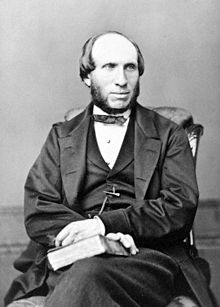
Sir John Struthers MD FRCSE FRSE ((1823-02-21)21 February 1823 – (1899-02-24)24 February 1899) was the first Regius Professor of Anatomy at the University of Aberdeen. He was a dynamic teacher and administrator, transforming the status of the institutions in which he worked. He was equally passionate about anatomy, enthusiastically seeking out and dissecting the largest and finest specimens, including whales, and troubling his colleagues with his single-minded quest for money and space for his collection. His collection was donated to Surgeon's Hall in Edinburgh.
Among scientists, he is perhaps best known for his work on the ligament which bears his name. His work on the rare and vestigial ligament of Struthers came to the attention of Charles Darwin, who used it in his Descent of Man to help argue the case that man and other mammals shared a common ancestor ; or "community of descent," as Darwin expressed it. (Full article...) -
Image 6
Forth Valley Royal Hospital is a hospital located in Larbert, Scotland. With 860 inpatient beds, 25 wards, and 16 operating theatres, it was Scotland's largest ever NHS construction project at the time but has been surpassed by the Queen Elizabeth University Hospital amongst others. Built at a cost of £300 million on the site of the old Royal Scottish National Hospital, it opened to its first patients in 2010. It is operated by NHS Forth Valley.
The hospital is the first in Scotland to have a Forestry Commission ranger on site, whose job is to encourage the use of the 70-acre (28 ha) grounds formerly belonging to the Larbert House estate. It has Scotland's first fully robotic pharmacy, in which robots dispense and label medicines. The hospital also employs robots to carry out tasks such as removing waste, delivering food to wards, and cleaning operating theatres. (Full article...) -
Image 7
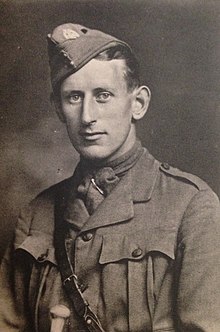
William "Willie" Middleton Wallace (23 September 1892 – 22 August 1915) was a rugby union player. He played fullback for Cambridge University RFC and was capped for Scotland in 1913–14.
Having grown up in Edinburgh, Willie Wallace went to King's College, Cambridge in 1912, where he was immediately noticed for his rugby-playing ability. He was selected to play against Oxford in the Varsity Match in his first term. Later in the season, in March 1913, Scotland picked him to play away against England, in a close game, which England won by just three points. The following season he played in all three Home Nations matches against Wales, Ireland and England. (Full article...) -
Image 8

The nave of Jedburgh Abbey, one of the most complete Romanesque buildings to survive in Scotland.
Church architecture in Scotland incorporates all church building within the modern borders of Scotland, from the earliest Christian structures in the sixth century until the present day. The early Christian churches for which there is evidence are basic masonry-built constructions on the west coast and islands. As Christianity spread, local churches tended to remain much simpler than their English counterparts. By the eighth century more sophisticated ashlar block-built buildings began to be constructed. From the eleventh century, there were larger and more ornate Romanesque buildings, as with Dunfermline Abbey and St Magnus Cathedral in Orkney. From the twelfth century the introduction of new monastic orders led to a boom in ecclesiastical building, often using English and Continental forms. From the thirteenth century elements of the European Gothic style began to appear in Scotland, culminating in buildings such as Glasgow Cathedral and the rebuilt Melrose Abbey. Renaissance influences can be seen in a move to a low-massive style that was probably influenced by contacts with Italy and the Netherlands.
From the mid-sixteenth century the Reformation revolutionised church architecture in Scotland. It resulted in a rejection of the elaborate ornamentation of existing churches. New churches were produced in a plain style, often with a T-plan that emphasised the pulpit and preaching. This style was adopted by both Presbyterian and Episcopalian wings of the Scottish Kirk, but there were some attempts to introduce Baroque elements into church building after the Restoration. In the eighteenth century the influence of James Gibbs led to churches that employed classical elements, with a pedimented rectangular plan and often with a steeple. This classicism continued into the early nineteenth century, but became increasingly controversial and began to be rejected for a version of the Gothic Revival, which flourished into the early twentieth century. Between the world wars, a form of Neo-Romanesque became the norm for new churches. In the second half of the twentieth century new churches were highly influenced by Modernism, resulting in rectangular and irregularly shaped buildings, built in new materials, although many of these were later demolished. As the level of new building reduced from the 1970s there was a move to functional and unambitious new churches, but in the 1980s there was a move back to more striking and original designs. (Full article...) -
Image 9Romanticism in Scotland was an artistic, literary and intellectual movement that developed between the late eighteenth and the early nineteenth centuries. It was part of the wider European Romantic movement, which was partly a reaction against the Age of Enlightenment, emphasising individual, national and emotional responses, moving beyond Renaissance and Classicist models, particularly into nostalgia for the Middle Ages. The concept of a separate national Scottish Romanticism was first articulated by the critics Ian Duncan and Murray Pittock in the Scottish Romanticism in World Literatures Conference held at UC Berkeley in 2006 and in the latter's Scottish and Irish Romanticism (2008), which argued for a national Romanticism based on the concepts of a distinct national public sphere and differentiated inflection of literary genres; the use of Scots language; the creation of a heroic national history through an Ossianic or Scottian 'taxonomy of glory' and the performance of a distinct national self in diaspora.
In the arts, Romanticism manifested itself in literature and drama in the adoption of the mythical bard Ossian, the exploration of national poetry in the work of Robert Burns and in the historical novels of Walter Scott. Scott also had a major impact on the development of a national Scottish drama. Art was heavily influenced by Ossian and a new view of the Highlands as the location of a wild and dramatic landscape. Scott profoundly affected architecture through his re-building of Abbotsford House in the early nineteenth century, which set off the boom in the Scots Baronial revival. In music, Burns was part of an attempt to produce a canon of Scottish song, which resulted in a cross fertilisation of Scottish and continental classical music, with romantic music becoming dominant in Scotland into the twentieth century. (Full article...) -
Image 10
Dubh Artach (/duː ˈɑːrtɑːx/; Scottish Gaelic: [t̪uh ˈarˠʃt̪əx]) is a remote skerry of basalt rock off the west coast of Scotland lying 18 miles (29 km) west of Colonsay and 15 miles (24 km) south-west of the Ross of Mull.
A lighthouse designed by Thomas Stevenson with a tower height of 145 feet (44 m) was erected between 1867 and 1872 with a shore station constructed on the isle of Erraid. The rock is subject to extraordinary sea conditions with waves of 92 feet (28 m) or more being encountered by the keepers. Despite these adverse conditions several men served the light for lengthy periods until it was automated in 1971. Dubh Artach is the official name of the lighthouse, although the skerry itself is also known as Dhu Heartach. Various interpretations have been provided for the original meaning of the Gaelic name, of which "The Black Rock" is the most likely. (Full article...) -
Image 11Berryman performing with Coldplay in 2023
Guy Rupert Berryman (born 12 April 1978) is a Scottish musician, songwriter, producer, businessman and designer. He is best known as the bassist of the rock band Coldplay and electronic supergroup Apparatjik. Raised in Kirkcaldy, he started to play bass at an early age, drawing inspiration from James Brown, the Funk Brothers and Kool & the Gang. His projects beyond music include The Road Rat magazine and Amsterdam-based fashion brand Applied Art Forms.
Berryman joined Coldplay with Chris Martin, Jonny Buckland and Will Champion at University College London, where he enrolled in a mechanical engineering degree but later dropped out. The band signed with Parlophone in 1999, finding global fame after the release of Parachutes (2000) and subsequent records. He has won seven Grammy Awards and nine Brit Awards as part of Coldplay. Having sold over 100 million albums worldwide, they are the most successful group of the 21st century. (Full article...) -
Image 12Between the 1930s and 1970s, the Scottish football club Rangers had an unwritten rule whereby the club would not knowingly sign any player who was a Roman Catholic. This was because Rangers were viewed as a Protestant, Unionist club, in contrast to their Old Firm rivals, Celtic who were viewed as an Irish Catholic club, although Celtic never adopted a similar signing policy. Rangers' policy was ended in 1989 when they signed ex-Celtic striker Mo Johnston, under manager Graeme Souness. (Full article...)
-
Image 13

David I, whose introduction of feudalism into Scotland would have a profound impact on the government of the kingdom, and his heir Malcolm IV
Government in medieval Scotland, includes all forms of politics and administration of the minor kingdoms that emerged after the departure of the Romans from central and southern Britain in the fifth century, through the development and growth of the combined Scottish and Pictish kingdom of Alba into the kingdom of Scotland, until the adoption of the reforms of the Renaissance in the fifteenth century.
Kingship was the major form of political organisation in the early Middle Ages, with competing minor kingdoms and fluid relationships of over- and under-kingdoms. The primary function of these kings was as war leaders, but there were also ritual elements to kingship, evident in ceremonies of coronation. The Kingdom of Alba, which emerged from the unification of the Scots and Picts in the tenth century, retained some of these ritual aspects, most obviously in the coronation ceremony at Scone. While the Scottish monarchy remained a largely itinerant institution, Scone remained one of its most important locations, with royal castles at Stirling and Perth becoming significant in the later Middle Ages before Edinburgh developed as a capital in the second half of the fifteenth century. The Scottish crown grew in prestige throughout the era and adopted the conventional offices of western European courts and later elements of their ritual and grandeur. (Full article...) -
Image 14Portrait by William Aikman, 1727
William Adam (1689 – 24 June 1748) was a Scottish architect, mason, and entrepreneur. He was the foremost architect of his time in Scotland, designing and building numerous country houses and public buildings, and often acting as contractor as well as architect. Among his best known works are Hopetoun House near Edinburgh, and Duff House in Banff. His individual, exuberant style built on the Palladian style, but with Baroque details inspired by Vanbrugh and Continental architecture.
In the 18th century, Adam was considered Scotland's "Universal Architect". However, since the early 20th century, architectural critics have taken a more measured view, Colin McWilliam, for instance, finding the quality of his work "varied to an extreme degree". As well as being an architect, Adam was involved in several industrial ventures and improvement schemes, including coal mining, salt panning, stone quarries and mills. In 1731 he began to build up his own estate in Kinross-shire, which he named Blair Adam. He was the father of three architects; John, Robert and James, the last two were the developers of the "Adam style". (Full article...) -
Image 15Colin Campbell Mitchell (17 November 1925 – 20 July 1996) was a British Army soldier and politician. He became a public figure in 1967 as the commanding officer of the 1st Battalion of the Argyll and Sutherland Highlanders. Forces under his command reoccupied the Crater district of Aden which had been taken over by local police mutineers in what became known as "the last battle of the British empire". The reoccupation and subsequent control of the Crater were controversial and Mitchell resigned his army commission in 1968. Subsequently, he became a Conservative Member of Parliament and served one term from 1970 to February 1974. After participation in a failed business venture he subsequently worked as a security and military consultant. In 1989 Mitchell took a leading role in the Halo Trust, a not-for-profit organisation undertaking mine clearance in former war zones. (Full article...)
-
Image 16
German submarine U-27 was a Type VIIA U-boat of Nazi Germany's Kriegsmarine built for service in World War II. Her keel was laid down in November 1935 in Bremen. She was commissioned in August 1936 with Korvettenkapitän Hans Ibbeken in command. Ibbeken was relieved on 4 October 1937, by Johannes Franz, who commanded the boat until 6 June 1939 when Hans-Georg von Friedeburg assumed command for barely one month. He was relieved on 8 July again by Johannes Franz, who commanded the boat until her loss on 20 September 1939.
U-27 had a very short career, with only one war patrol and only two enemy ships sunk. Following the sinking of two British trawlers, Davara on 13 September and Rudyard Kipling on 16 September, U-27 was hunted down and sunk west of Lewis, Scotland, by depth charges from the British destroyers HMS Fortune, Faulknor and Forester. All 38 crewmen survived and were made prisoner for the remainder of the war. (Full article...) -
Image 17
Illieston House, also known as Illieston Castle, is a castle located in West Lothian, Scotland, by the River Almond near Broxburn. It was built around 1600 and features a T-plan design with gabled dormers and a staircase tower. Over its history, it underwent modifications and restorations, including additions such as a new kitchen wing and modern interior amenities. It has changed ownership several times and it was renovated in 1856 by architect William Burn and underwent modernization in the 21st century. Listed as a Category B building in 1971, it attracted media attention for its sale in 2018. (Full article...) -
Image 18
Shetland, also called the Shetland Islands, is an archipelago in Scotland lying between Orkney, the Faroe Islands, and Norway. It is the northernmost region of the United Kingdom.
The islands lie about 50 miles (80 kilometres) to the northeast of Orkney, 110 mi (170 km) from mainland Scotland and 140 mi (220 km) west of Norway. They form part of the border between the Atlantic Ocean to the west and the North Sea to the east. Their total area is 1,467 km2 (566 sq mi), and the population totalled 23,020 in 2022. The islands comprise the Shetland constituency of the Scottish Parliament. Shetland forms one of the 32 council areas of Scotland; the local authority is the Shetland Islands Council. The islands' administrative centre, largest settlement and only burgh is Lerwick, which has been the capital of Shetland since 1708, before which time the capital was Scalloway. (Full article...) -
Image 19

The 2014 Scottish Labour Party leadership election was an internal party election to choose a new leader and deputy leader of the Scottish Labour Party, following the resignations of Johann Lamont as leader and Anas Sarwar as deputy. Lamont announced her decision in an interview with the Daily Record on 24 October, saying that she was stepping down effective immediately because the UK Labour Party treated the Scottish party as a "branch office of London". Lamont, who had won the 2011 leadership contest, thus becoming the first Scottish leader to have authority over Labour's Scottish MPs in the House of Commons as well as in the Scottish Parliament, was the second leader of a Scottish political party to resign in the wake of the 2014 independence referendum. Before her resignation, Alex Salmond announced his intention to relinquish the role of Scottish National Party (SNP) leader and First Minister. Sarwar announced his own resignation on 30 October, saying he felt it was right for the party to elect a new leadership team.
Sarwar became interim leader following Lamont's resignation, and announced plans for the party to hold a leadership contest, with the winner to be announced on 13 December. Sarah Boyack became the first person to confirm that she would be standing as a candidate for party leader; she was subsequently joined by Neil Findlay and Jim Murphy. Katy Clark and Kezia Dugdale entered the deputy leadership race. Findlay was among those to call on former British Prime Minister Gordon Brown to enter the contest, but he ruled out doing so. Other senior Labour figures who decided not to put their names forward included Sarwar, Jackie Baillie, and Jenny Marra. (Full article...) -
Image 20
The Forth Bridge is a cantilever railway bridge across the Firth of Forth in the east of Scotland, 9 miles (14 kilometres) west of central Edinburgh. Completed in 1890, it is considered a symbol of Scotland (having been voted Scotland's greatest man-made wonder in 2016), and is a UNESCO World Heritage Site. It was designed by English engineers Sir John Fowler and Sir Benjamin Baker. It is sometimes referred to as the Forth Rail Bridge (to distinguish it from the adjacent Forth Road Bridge), although this is not its official name.
Construction of the bridge began in 1882 and it was opened on 4 March 1890 by the Duke of Rothesay, the future Edward VII. The bridge carries the Edinburgh–Aberdeen line across the Forth between the villages of South Queensferry and North Queensferry and has a total length of 8,094 feet (2,467 m). When it opened it had the longest single cantilever bridge span in the world, until 1919 when the Quebec Bridge in Canada was completed. It continues to be the world's second-longest single cantilever span, with a span of 1,709 feet (521 m). (Full article...) -
Image 21
Jessie Stephen, MBE (19 April 1893 – 12 June 1979) was a twentieth-century British suffragette, labour activist and local councillor. She grew up in Scotland and won a scholarship to train as a teacher. Family finances dictated otherwise, leading to her becoming a domestic worker at the age of 15. She became involved in national labour issues as a teenager, via organisations such as the Independent Labour Party and the Women's Social and Political Union. Stephen moved to London during World War I and in the 1920s she toured the United States and Canada, where she held meetings with the public including migrant English domestic workers.
Stephen was elected as a local councillor several times and stood as a candidate in general elections. After moving to Bristol in the 1940s she became the first woman president of Bristol Trades Council. She was appointed MBE in 1977 and her life is commemorated by a blue plaque in Bristol. (Full article...) -
Image 22
Rusco Tower, sometimes called Rusco Castle, is a tower house near Gatehouse of Fleet in Dumfries and Galloway, Scotland. Built around 1500 for Mariota Carson and her husband Robert Gordon, on lands given to them by her father, it was used to incarcerate a number of the Gordons' rivals in the 16th century. After Robert Gordon died and Carson remarried, their eldest son James Gordon seized the tower and imprisoned his mother, fearing that she would make it over to her new husband, Thomas Maclellan of Bombie. Gordon went on to kill Maclellan on the High Street in Edinburgh, while a court case intended to settle the matter was ongoing.
The Gordons sold the tower in the 17th century, and it was inhabited continuously until the late 19th or early 20th century. By the middle of the 20th century the building was uninhabited and had fallen into a state of disrepair. In 1971 it was designated a Category A listed building, and was shortly afterwards purchased and renovated by Graham Carson, a Scottish businessman, who went on to live in it from 1979 until 2006. Carson attempted to discover whether his family was related to the Carsons who originally owned the estate, but was unable to document a connection. It remains in the Carson family, and is still used as a domestic dwelling. (Full article...) -
Image 23
Ben Nevis (/ˈnɛvɪs/ NEV-iss; Scottish Gaelic: Beinn Nibheis, Scottish Gaelic pronunciation: [pe(ɲ) ˈɲivɪʃ]) is the highest mountain in Scotland, the United Kingdom, and the British Isles. Ben Nevis stands at the western end of the Grampian Mountains in the Highland region of Lochaber, close to the town of Fort William. The mountain's name can translate to either "cloudy mountain" or "venomous mountain".
The mountain is a popular destination, attracting an estimated 150,000 visitors a year, around three-quarters of which use the Mountain Track from Glen Nevis. The mountain has hosted a foot race since 1898. The 700-metre (2,300 ft) cliffs of the north face are among the highest in Scotland, providing classic scrambles and rock climbs of all difficulties for climbers and mountaineers. They are also the principal locations in Scotland for ice climbing. (Full article...) -
Image 24
Forth Road Bridge, one of the prestigious architectural projects of the 1960s
Architecture in modern Scotland encompasses all building in Scotland, between the beginning of the twentieth century and the present day. The most significant architect of the early twentieth century was Charles Rennie Mackintosh, who mixed elements of traditional Scottish architecture with contemporary movements. Estate house design declined in importance in the twentieth century. In the early decades of the century, traditional materials began to give way to cheaper modern ones. After the First World War, Modernism and the office block began to dominate building in the major cities and attempts began to improve the quality of urban housing for the poor, resulted in a massive programme of council house building. The Neo-Gothic style continued in to the twentieth century but the most common forms in this period were plain and massive Neo-Romanesque buildings.
After the Second World War, brutalist tower blocks were adopted as a solution and this period saw the building of new towns, including Glenrothes and Cumbernauld, but the social and building problems of these constructions soon became apparent. The creation of new towns and council house estates necessitated the rapid supply of new churches. From the 1980s Scottish architecture began to recover its reputation, with new buildings like that created to house the Burrell Collection in Glasgow and more recently the Scottish Parliament Building in Edinburgh. There has also been urban regeneration, involving the replacement and renovation of existing buildings and landscapes. The 1980s saw the growth of speculative house building by developers and the introduction of English brick and half-timbered vernacular styles to Scotland. As the production of state sponsored housing subsided in the 1970s there was a return to conservatism in church design, but there were some original and post-modern designs from the 1980s. (Full article...) -
Image 25
The Isle of Arran (/ˈærən/; Scottish Gaelic: Eilean Arainn) or simply Arran is an island off the west coast of Scotland. It is the largest island in the Firth of Clyde and the seventh-largest Scottish island, at 432 square kilometres (167 sq mi). Historically part of Buteshire, it is in the unitary council area of North Ayrshire. In the 2011 census it had a resident population of 4,629. Though culturally and physically similar to the Hebrides, it is separated from them by the Kintyre peninsula. Often referred to as "Scotland in Miniature", the Island is divided into highland and lowland areas by the Highland Boundary Fault and has been described as a "geologist's paradise".
Arran has been continuously inhabited since the early Neolithic period. Numerous prehistoric remains have been found. From the 6th century onwards, Goidelic-speaking peoples from Ireland colonised it and it became a centre of religious activity. In the troubled Viking Age, Arran became the property of the Norwegian crown, until formally absorbed by the kingdom of Scotland in the 13th century. The 19th-century "clearances" led to significant depopulation and the end of the Gaelic language and way of life. The economy and population have recovered in recent years, the main industry being tourism. However, the increase in tourism and people buying holiday homes on the Island, the second highest rate of such homes in the UK, has led to a shortage of affordable homes on the Island. There is a diversity of wildlife, including three species of tree endemic to the area. (Full article...)
Lists of featured content
| This is a list of recognized content, updated weekly by JL-Bot (talk · contribs) (typically on Saturdays). There is no need to edit the list yourself. If an article is missing from the list, make sure it is tagged (e.g. {{WikiProject Scotland}}) or categorized correctly and wait for the next update. See WP:RECOG for configuration options. |
Featured articles
- Áedán mac Gabráin
- Anglo-Scottish war (1650–1652)
- Anne, Queen of Great Britain
- Anne of Denmark
- HMS Argus (I49)
- Japanese battleship Asahi
- Battle of Blenheim
- Blue men of the Minch
- William Bruce (architect)
- William Speirs Bruce
- Burke and Hare murders
- Burnt Candlemas
- Constantine II of Scotland
- Cullen House
- David I of Scotland
- Walter Donaldson (snooker player)
- Donnchadh, Earl of Carrick
- Alec Douglas-Home
- Battle of Dunbar (1650)
- Edward I of England
- Elgin Cathedral
- Queen Elizabeth The Queen Mother
- Fauna of Scotland
- From the Doctor to My Son Thomas
- Rachel Chiesley, Lady Grange
- Margaret Macpherson Grant
- Great North of Scotland Railway
- Bryan Gunn
- Battle of Halidon Hill
- HMS Hood
- Battle of Inverkeithing
- James II of England
- James VI and I
- Jocelin of Glasgow
- Kelpie
- John Knox
- Elizabeth Maitland, Duchess of Lauderdale
- Gregor MacGregor
- Mary, Queen of Scots
- Murray Maxwell
- William McGregor (football)
- Nebula Science Fiction
- Neilston
- Nuckelavee
- Order of the Thistle
- Pitfour estate
- HMS Ramillies (07)
- Renewable energy in Scotland
- Representative peer
- HMS Royal Oak (08)
- Scotland in the High Middle Ages
- Scotland national football team
- Scottish National Antarctic Expedition
- Shapinsay
- Isle of Skye
- Charlotte Stuart, Duchess of Albany
- HMS Vanguard (23)
- Second War of Scottish Independence
- John Wark
- Westminster Assembly
- Whisky Galore! (1949 film)
- John Michael Wright
Former featured articles
Good articles
- A82 road
- 2001 Scottish Masters
- 2002 Scottish Masters
- 2014 Scottish Labour leadership election
- 2022 Aberdeen City Council election
- 2022 Aberdeenshire Council election
- 2022 Angus Council election
- 2022 Argyll and Bute Council election
- 2022 City of Edinburgh Council election
- 2022 Clackmannanshire Council election
- 2022 East Ayrshire Council election
- 2022 Glasgow City Council election
- 2022 Highland Council election
- 2022 North Ayrshire Council election
- 2022 North Lanarkshire Council election
- 2022 South Ayrshire Council election
- 2022 South Lanarkshire Council election
- Aberdeen F.C.
- Aberdeen F.C.–Rangers F.C. rivalry
- Aberdour Castle
- William Adam (architect)
- William Aitken (architect)
- Arbroath
- Architecture of Scotland
- Architecture in early modern Scotland
- Architecture in modern Scotland
- Architecture of Scotland in the Industrial Revolution
- Architecture of Scotland in the Middle Ages
- Architecture of Scotland in the Roman era
- Architecture of Scotland in the prehistoric era
- Isle of Arran
- Art in Medieval Scotland
- Art in early modern Scotland
- Art in modern Scotland
- Allison Balfour
- James Balfour (died 1845)
- John Barrowman
- Battle of Barry
- Jim Baxter
- Ian Begg (architect)
- Ben Nevis
- Lewis Benson (boxer)
- Guy Berryman
- The Bhoys from Seville
- Billy Boys
- The Black Island
- HMS Bonaventure (31)
- Boobrie
- Eilley Bowers
- Bill Bowman (Scottish politician)
- Gordon Brown
- Brownie (folklore)
- Alexander Buchan (artist)
- Calendar (New Style) Act 1750
- James Campbell (British Army officer, died 1745)
- Camus Cross
- Peter Capaldi
- Thomas Carlyle
- Castles in Scotland
- Celtic F.C. in European football
- Celtic Park
- Erik Chisholm
- Church architecture in Scotland
- Winston Churchill
- Clan Maclachlan
- Clydesdale horse
- HMS Conqueror (1911)
- The Cookery Book of Lady Clark of Tillypronie
- Coxton Tower
- Craigiehall
- Lord Ninian Crichton-Stuart
- Cruachan Power Station
- Cullen Old Church
- Cultybraggan Camp
- 1966 European Cup Winners' Cup final
- The Daily Mash
- Dandie Dinmont Terrier
- Ruth Davidson
- James Davis (escaped convict)
- Demographic history of Scotland
- Paul Dickov
- Mary Docherty
- Donkey Punch (novel)
- Doune Castle
- Dowhill Castle
- Dubh Artach
- Andrew Dudley
- Duncraig Castle
- Dunnottar Castle
- Dunrobin Castle
- Dunstaffnage Castle
- East Kirkton Quarry
- East Stirlingshire F.C.
- Easter Road
- Economy of Scotland in the Middle Ages
- Economy of Scotland in the early modern period
- Edinburgh Castle
- University of Edinburgh
- Edinburgh Zoo
- Education in Medieval Scotland
- Education in early modern Scotland
- Edzell Castle
- Eenoolooapik
- Eidyn
- Elcho Castle
- English invasion of Scotland (1400)
- Eriskay Pony
- Estate houses in Scotland
- 1884 FA Cup final
- Edward G. Faile
- Fairy Flag
- Falkirk Wheel
- Family in early modern Scotland
- James Ferguson, Lord Pitfour
- James Ferguson (Scottish politician)
- Finnieston Crane
- Flag of Scotland
- Flora of Scotland
- Sir Ewan Forbes, 11th Baronet
- Forglen House
- Forth Bridge
- Forth Valley Royal Hospital
- Dario Franchitti
- Château Gaillard
- Ryan Gauld
- Geography of Scotland in the Middle Ages
- Geography of Scotland in the early modern era
- Geology of Scotland
- Giffnock
- Gilli (Hebridean earl)
- Glass Swords
- The Glenlivet distillery
- Glenrothes
- Glorious Revolution in Scotland
- Government in early modern Scotland
- Government in medieval Scotland
- Isobel Gowdie
- Grey Gowrie
- John Gregorson Campbell
- Hampden Park
- Hibernian F.C.
- Highland cattle
- Highlands and Islands Alliance
- Lists of mountains and hills in the British Isles
- Hillforts in Scotland
- History of Scotland
- History of agriculture in Scotland
- Mary Hogarth
- Housing in Scotland
- How the Scots Invented the Modern World
- Leslie Hunter
- HMS Hurst Castle
- Ibrox Stadium
- 1902 Ibrox disaster
- Illieston House
- Inchdrewer Castle
- History of infant schools in Great Britain
- Inner Hebrides
- James Innes (British Army officer, died 1759)
- Charles Irving (surgeon)
- Islands of the Clyde
- Islay
- James I of Scotland
- Bert Jansch
- Jarlshof
- Jocky Wilson Cup
- Kelvin Scottish
- Battle of Kinghorn
- Kirkandrews, Dumfries and Galloway
- Kirkcaldy
- Kirkcudbright Tolbooth
- Labour Party of Scotland
- Johann Lamont
- Landscape painting in Scotland
- Billy Liddell
- Literature in early modern Scotland
- Kim Little
- Loch Arkaig treasure
- Loch Henry
- Lochleven Castle
- RAF Lossiemouth
- Donald MacKay (architect)
- Murder of Alesha MacPhail
- Clan MacAulay
- Doris Mackinnon
- Sorley MacLean
- Richard Madden
- SS Manasoo
- James Clerk Maxwell
- Maybole Castle
- James McAvoy
- Stuart McCall
- Angus McDonald (Virginia militiaman)
- McEwan's
- Ewan McGregor
- John George McTavish
- Johnny McNichol
- Meantime (book)
- Mingulay
- Colin Mitchell
- Michelle Mone, Baroness Mone
- Monifieth
- William Montgomerie
- Simone Murphy
- James Murray, Lord Philiphaugh
- Music in early modern Scotland
- John Mylne (died 1667)
- The National (Scotland)
- Robert Alexander Neil
- John Ogilby
- One Kiss
- Orkney
- Outer Hebrides
- Paisley witches
- Papa Stour
- Partick Thistle F.C.
- Portrait painting in Scotland
- Potion (song)
- Prehistoric art in Scotland
- Raasay
- RAF Machrihanish
- Ragnall ua Ímair
- Alex Raisbeck
- Lynne Ramsay
- Rangers F.C. signing policy
- Renaissance in Scotland
- Richard Rennison
- Rhapsody (climb)
- Rockstar Dundee
- Rockstar North
- Romanticism in Scotland
- Andrew Ross (rugby union, born 1879)
- Royal Banner of Scotland
- Rusco Tower
- St Margaret's Church, Aberlour
- St Peter's Roman Catholic Church, Buckie
- St Rufus Church
- Scandinavian Scotland
- Schiehallion experiment
- Scotland during the Roman Empire
- Scotland in the Late Middle Ages
- Scotland in the Middle Ages
- Scotland in the early modern period
- Scotland in the modern era
- Scotland national football team manager
- Scotland under the Commonwealth
- Scottish art
- 1999 Scottish Challenge Cup final
- 2002 Scottish Challenge Cup final
- 2007 Scottish Challenge Cup final
- Scottish Challenge Cup
- 1873–74 Scottish Cup
- 2012 Scottish Cup final
- 2019 Scottish Open (snooker)
- 1971 Scottish soldiers' killings
- Scottish Terrier
- Scottish art in the eighteenth century
- Scottish art in the nineteenth century
- Scottish religion in the eighteenth century
- Scottish religion in the seventeenth century
- Scottish society in the Middle Ages
- Scottish society in the early modern era
- Scuttling of the German fleet at Scapa Flow
- Sea Mither
- Bill Shankly
- Shetland
- Shieling
- Sieges of Berwick (1355 and 1356)
- Ian Smith (rugby union, born 1903)
- Jimmy Speirs
- Staffa
- Jessie Stephen
- Still Wakes the Deep
- Alexander Stoddart
- Stoor worm
- John Struthers (anatomist)
- Charles Edward Stuart
- Sundrum Castle
- Philipp Tanzer
- Tay Whale
- D'Arcy Wentworth Thompson
- Thurso
- Tibbers Castle
- Titan Clydebank
- Torf-Einarr
- Tradeston Flour Mills explosion
- Trident (UK nuclear programme)
- USS Tucker (DD-374)
- German submarine U-27 (1936)
- Urquhart Castle
- James Walker (Australian politician)
- James Walker (Royal Navy officer)
- William Middleton Wallace
- Warfare in Medieval Scotland
- Warfare in early modern Scotland
- Water bull
- West Highland White Terrier
- Robert White (Virginia physician)
- Krysty Wilson-Cairns
- Witch trials in early modern Scotland
- Andrew Wodrow
- Women in early modern Scotland
Former good articles
- Alexander Bain (inventor)
- Billy Bremner
- British people
- William Buchanan (locomotive designer)
- Canadian Gaelic
- Andrew Carnegie
- Carnoustie
- Coatbridge
- Catherine Cranston
- Arthur Conan Doyle
- Dundee United F.C.
- Steve Evans (footballer, born 1962)
- Evanton
- Forth Road Bridge
- Glasgow
- Glasgow, Paisley, Kilmarnock and Ayr Railway
- University of Glasgow
- Frank Hadden
- Halloween
- David Hume
- Jordanhill railway station
- Deborah Kerr
- Lothian Buses
- Gillian McKeith
- Andy Murray
- Picts
- Scotland
- Scots language
- Still Game
- Alec Sutherland
- Tay Bridge
- Treasure Island
- William Morrison (chemist)
Featured lists
- List of islands of Scotland
- List of Celtic F.C. managers
- List of Scottish Football League clubs
- List of Scotland international footballers
- List of Scotland ODI cricketers
- List of Scotland national football team hat-tricks
- List of Scottish football champions
- List of Scottish football clubs in the FA Cup
- PFA Scotland Players' Player of the Year
- SFWA Footballer of the Year
- Scotland national football team results (1872–1914)
- Timeline of prehistoric Scotland
- Timeline of Scottish football
Featured pictures
-
13-06-07 RaR Biffy Clyro Simon Neil 02
-
Aerial View of Edinburgh, by Alfred Buckham, from about 1920
-
Arthur-James-Balfour-1st-Earl-of-Balfour
-
CAMPBELL, George W-Treasury (BEP engraved portrait)
-
Charles Robert Leslie - Sir Walter Scott - Ravenswood and Lucy at the Mermaiden's Well - Bride of Lammermoor
-
Common seal (Phoca vitulina) 2
-
Dalziel Brothers - Sir Walter Scott - The Talisman - Sir Kenneth before the King
-
Daniel Craig McCallum by The Brady National Photographic Art Gallery
-
David Livingstone by Thomas Annan
-
Dunrobin Castle -Sutherland -Scotland-26May2008 (2)
-
Edinburgh Castle from Grass Market
-
Eilean Donan Castle, Scotland - Jan 2011
-
Falkirk Wheel Timelapse, Scotland - Diliff
-
FalkirkWheelSide 2004 SeanMcClean
-
Gavin Hamilton - Coriolanus Act V, Scene III edit2
-
Jaguar at Edinburgh Zoo
-
Jeremiah Gurney - Photograph of Euphrosyne Parepa-Rosa
-
Loch Torridon, Scotland
-
Mount Stuart House 2018-08-25
-
N. M. Price - Sir Walter Scott - Guy Mannering - At the Kaim of Derncleugh
-
NEWScotland-2016-Aerial-Blackness Castle 01
-
Nils Olav inspects the Kings Guard of Norway after being bestowed with a knighthood at Edinburgh Zoo in Scotland
-
Paisley Abbey Interior East
-
Paisley Abbey from the south east
-
Prince James Francis Edward Stuart by Alexis Simon Belle
-
Robert William Thomson - Illustrated London News March 29 1873
-
Scotland-2016-West Lothian-Hopetoun House 02
-
Sgùrr nan Gillean from Sligachan, Isle of Skye, Scotland - Diliff
-
Sir Anthony Van Dyck - Charles I (1600-49) - Google Art Project
-
St Matthew's Church - Paisley - Interior - 5
-
Synthetic Production of Penicillin TR1468
-
The Air Ministry, 1939-1945. CH10270 – Edit 1
-
The Monarch of the Glen, Edwin Landseer, 1851
-
The Skating Minister
-
Thomas Keene in Macbeth 1884 Wikipedia crop
-
View of loch lomond
-
Wemyss Bay railway station concourse 2018-08-25 2
-
William John Macquorn Rankine by Thomas Annan
Get involved
For editor resources and to collaborate with other editors on improving Wikipedia's Scotland-related articles, see WikiProject Scotland.
To get involved in helping to improve Wikipedia's Scotland related content, please consider doing some of the following tasks or joining one or more of the associated Wikiprojects:
- Visit the Scottish Wikipedians' notice board and help to write new Scotland-related articles, and expand and improve existing ones.
- Visit Wikipedia:WikiProject Scotland/Assessment, and help out by assessing unrated Scottish articles.
- Add the Project Banner to Scottish articles around Wikipedia.
- Participate in WikiProject Scotland's Peer Review, including responding to PR requests and nominating Scottish articles.
- Help nominate and select new content for the Scotland portal.
Do you have a question about The Scotland Portal that you can't find the answer to?
Post a question on the Talk Page or consider asking it at the Wikipedia reference desk.
Related portals
Wikipedia in other relevant languages
Associated Wikimedia
The following Wikimedia Foundation sister projects provide more on this subject:
-
Commons
Free media repository -
Wikibooks
Free textbooks and manuals -
Wikidata
Free knowledge base -
Wikinews
Free-content news -
Wikiquote
Collection of quotations -
Wikisource
Free-content library -
Wikispecies
Directory of species -
Wikiversity
Free learning tools -
Wikivoyage
Free travel guide -
Wiktionary
Dictionary and thesaurus
Hidden categories:





